The Emerging Company Showcase applications will open in the new year!
The ESCRS is looking to identify smaller companies with emerging technologies to present at the 5th ESCRS iNovation® Day taking place on 11 September 2026 at Excel London in the UK.
The goal is to have emerging technologies presented to a large ophthalmic audience of doctors and industry to accelerate market introductions.
Presentations will be reviewed and discussed with a panel of ESCRS doctor leadership and key industry leads. Presenting company applications will be reviewed by the ESCRS iNovation® Day Programme Committee, that includes the key leadership of the ESCRS organisation. If your company is selected, the fee to present is €1,000.
Important Dates
Watch Emerging Company Showcase interviews with Lawrence Willis from 2025
Ioannis Pallikaris
Founder of Institute of Vision and Optics (IVO)
Stanley Windsor
Founder of Innoptix
Nir Israeli
Co-Founder of Sanoculis
Watch all 2025 Emerging Company Showcase Presentations
You can now view each 2025 Emerging Company Showcase presentation online. Simply click on the individual profile of a presenter below to watch their recorded session and learn more about their innovative work.
-
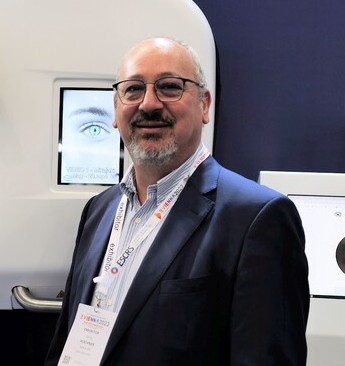
Jacky Hochner

Jacky Hochner
ECS01 – The Eyelib
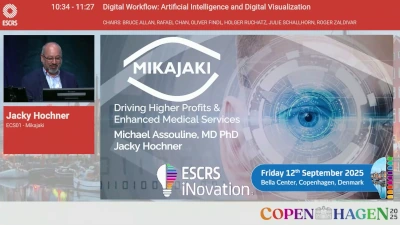
Company website: www.eye-yon.com
The Eyelib – A multi-ocular robotic platform to automate eye measurements and comprehensive AI-powered diagnosis
- Assouline1,*
1Iena vision, Paris, France
Mikajaki is an emerging startup from Geneva, which designs and manufactures the Eyelib, a multi-ocular robotic platform to automate measurements of eyes, armed with in-house cutting edge AI capabilities for automated eye diagnosis. Mikajaki aims at augmenting services of the ophthalmological clinic by providing a smart and cost-effective platform.
Our solution is based on three main pillars:
- The Eyelib robotic platform: to automate acquisition of objective data, from current prescription through auto-refractometers (pachy, tono, topo, retroillumination, biometry) to OCT for in-depth measurements of the back of the eye
- The Ariane Insight agent: an interactive AI-based chatbot aimed at collecting subjective patient information
- Perform prescreening
- Perform visual test and profile
- Perform initial diagnosis
- An analytics AI-powered reporting platform: A proprietary AI-powered diagnostic platform, providing predictions based on the combination of objective and subjective data. Our AI platform was trained on large sets of data from multiple centers and from specialized cohorts, composed of variable demographics in France (CNIL authorized research, with ~20 partner clinics). All predictions are demonstrable and based on clinical and retrospective studies we performed. We provide predictions such as:
- Subjective refraction
- Risk of glaucoma, angle closure
- Detection and grading cataracts
- Detection of IOL and implant type
- Classification of eye aberrations from retroillumination and OCT
- IOL power predictor
- Eligibility to surgery
To the three pillars above we add an interactive graphical interface, our SmartVision report, which allows the practitioner to review the ensemble of results in an integrative and appealing graphical interface, shortens synthesis of the ensemble of data and facilitates human review of data and diagnosis.
Mikajaki’s unique and integrative approach is distinguished from current technologies by three principal points:
- Automated patient workflow: an integrated platform eliminating the need for patients to move between multiple diagnostic stations
- Multi-modality: combining several optical devices in a single station
- A comprehensive AI-driven fusion of subjective and objective data for diagnosis.
Key features and benefits of Mikajaki’s solution
- Compact Eyelib design, automating the patient journey from registration to data acquisition and finally diagnosis, thus shortening waiting time and sparing resources
- Rapid examination 6-10 minutes per patient
- Collection of objective and subjective data
- High repeatability
- Automated AI-driven diagnosis
- Telemedicine ready
- Interfacing with 3rd party softwares/AI
- Flexible composition of the machines for clinic-tailored needs
- Flexible parameters to adjust to clinical practices
- Ergonomic SmartVision report, adapted to clinic-specific workflows
- Interfacing with Electronic Medical Records
- Centralized internal database
- Motivated and responsive development team
Company website: https://mikajaki.ai/
-

John Berestka
Northwest Eye, Minneapolis, United States
John Berestka
Northwest Eye, Minneapolis, United StatesECS02 – Lightfield Medical
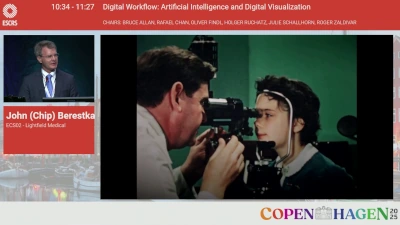
Company website: www.web.com
Lightfield Medical: Autonomous digital capture of the entire slit-lamp exam reinvents the heart and soul of ophthalmology
- Berestka, MD1,*
1Cornea, Northwest Eye Clinic, Minneapolis, United States
The ophthalmic slit lamp, the cornerstone of ophthalmology, has remained stagnant for decades. The current slit lamp exam paradigm necessitates the doctor’s physical presence in the room with the patient, making the exam ephemeral and incapable of easy digital capture. Conventional slit-lamp cameras, while useful, slow down the exam, produce inadequate images, and cannot be delegated to technicians. These limitations reduce ophthalmologist productivity and hinder telemedicine in ophthalmology.
For decades, ophthalmologists have delegated retinal and optic nerve imaging to technicians. The missing link in ophthalmology is a solution to automatically capture the entire slit-lamp exam. Lightfield Medical reinvented the slit -lamp from first principles using high speed camera arrays, tunable liquid lenses and a digital light engine. A minimally trained technician simply aligns the device on the pupil and presses a button, allowing the device to take over and capture the anterior segment for the ophthalmologist. The eye doctor can then navigate through the exam in any order using gestures on a phone, tablet or browser. Patients can now easily see their own slit-lamp findings to better understand their own pathology.
As eye care faces a productivity crunch, our medical device will become increasingly essential. The US National Eye Institute predicts a 24% surge in ophthalmology demand by 2023 due to an aging population, yet the ophthalmology supply is expected to decline by 12% during the same period.
Lightfield Medical has developed three generations of prototypes and plans a US product release in late Summer 2025. Our intellectual property portfolio includes four US and one UK patents, with ten additional applications pending. We are led by a team of world-renowned ophthalmologists, including four past presidents of ESCRS, ASCRS, ISRS, and AECOS.
Our device will empower eye doctors to streamline patient care by delegating exam acquisition to technicians. Imagine a scenario where post-operative or brief exam patients are seen by a technician at a satellite office conveniently located near their homes. The exam can be reviewed by an ophthalmologist between surgeries. Findings and instructions can be promptly communicated to the patient via a quick video text message.
Our product will revolutionize eye care by fully documenting the entire slit-lamp exam for the first time. This advancement enables the comparison of eye exams from visit to visit and from doctor to doctor. The standardized lighting and viewing angles will create a homogeneous image database for artificial intelligence.
Company website: www.lightfieldmedical.com
ESC02 – Lightfield Medical

-
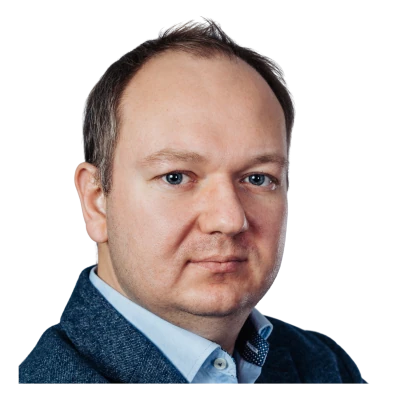
Dr Przemyslaw Korzeniowski

Dr Przemyslaw Korzeniowski
ECS03 – The Next-Gen High-Fidelity Ophthalmic Surgery Simulator
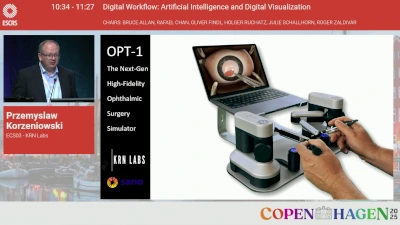
Company website: www.web.com
The Next-Gen High-Fidelity Ophthalmic Surgery Simulator
- Korzeniowski1,2,*
1CEO, KRN Labs, 2Medical Imaging and Robotics, Sano Centre for Computational Medicine, Kraków, Poland
KRN Labs is an immersive technology startup specializing in high-fidelity virtual reality (VR) surgical simulators. Founded in 2018 by Dr. Przemysław Korzeniowski, Imperial College London alumni, the company aims to revolutionize surgical training by providing realistic, affordable, and accessible VR solutions for medical professionals worldwide.
Mission and Vision
KRN Labs believes that VR simulation can significantly enhance surgical training by offering a safe, controllable, and configurable environment. This approach eliminates the ethical concerns and high costs associated with traditional training methods involving animals or cadavers. By leveraging VR technology, KRN Labs strives to improve the educational experience without putting patients at risk.
Product Portfolio
KRN Labs has developed a suite of VR surgical simulators tailored to various training needs:
SurgicaVR: Designed for robotic and laparoscopic surgery training, SurgicaVR utilizes consumer-grade VR headsets like Meta Quest 2/3 and Apple Vision Pro. It currently features a comprehensive cholecystectomy procedure, with plans to expand its library with diverse surgical scenarios and real-time feedback systems.
SurgicaVR Pro: Building on SurgicaVR, this simulator offers ultra-realistic graphics and detailed procedural scenarios tailored for institutions and individual practitioners. It includes scalable training modules and performance tracking tools, making high-fidelity laparoscopic training more accessible.
SurgicaVR ProHaptics: This advanced simulator integrates Follou’s Haptic Avatar technology, providing precise force feedback for an authentic surgical experience. It allows medical professionals to train in laparoscopic procedures with unparalleled realism.
We also developed a cataract simulator for the leading global eye-care company.
Technological Innovation
KRN Labs addresses the limitations of conventional surgical training by offering VR simulators that replicate real-life surgical conditions. These simulators provide a safe and ethical training environment, enabling clinicians to practice repetitively without risking patient safety. The integration of haptic feedback technology further enhances the realism of the training experience.
KRN Labs continues to push the boundaries of medical training by developing innovative VR solutions that enhance the skills of healthcare professionals, ultimately aiming to improve patient care outcome.
Company website: https://krn-labs.com
-

Enrique Vega

Enrique Vega
ECS04 – The Eye Reimagined
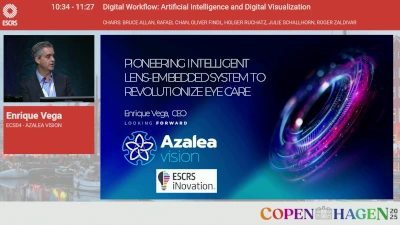
Company website: www.web.com
The Eye Reimagined: A Lens-Embedded Platform for Real-Time Care and Beyond.
Delivering real-time visual correction, health monitoring, and digital interaction through adaptive optics, embedded electronics, and seamless connectivity.
- Vega1,*
1Azalea Vision, Ghent, Belgium
Azalea Vision is developing the first medical-grade smart lens platform that adapts, connects, and delivers real-time clinical value. Spun off from imec and Ghent University, Azalea integrates adaptive optics, liquid crystal technology, and embedded electronics within a scleral lens to treat complex vision conditions like keratoconus and presbyopia. Backed by leading investors and supported by public innovation grants, Azalea’s technology dynamically corrects vision and communicates with smartphones or wearables via NFC. Future applications include tear-based biosensing, precision drug delivery, and integration into AR/VR systems—redefining vision as an intelligent, connected health interface.
Extended Summary:
Azalea Vision is pioneering the future of connected ocular health through the development of the first medical-grade, intelligent lens-embedded system designed for real-time clinical impact.
Founded in 2021 as a spin-off from imec and Ghent University, Azalea combines deep expertise in microelectronics, biomedical optics, and medical device innovation. The company is backed by leading HealthTech, MedTech, and DeepTech investors—including imec.xpand, Elaia Partners, Sensinnovat, and SPRIM SGI—and supported by public innovation grants such as the European Innovation Council (EIC) and VLAIO.
At the core of Azalea’s platform is a breakthrough smart lens technology that integrates adaptive optics, liquid crystal filters, custom ASICs, and NFC-enabled communication—all engineered within a scleral lens format. This technology mimics the natural responsiveness of the human eye, adapting in milliseconds to changes in light, focus, and motion, while remaining seamlessly connected to external devices like smartphones or smartwatches.
Azalea’s first clinical application targets patients with corneal irregularities, such as keratoconus and irregular astigmatism, conditions often underserved by existing static or surgical solutions. The lens provides dynamic, personalised correction of higher-order aberrations (HOAs), improving visual acuity and quality of life for patients who cannot benefit from standard interventions.
And Azalea’s platform goes far beyond correction. It is built to scale across a pipeline of future applications, including:
– Tear-based biosensingfor conditions like glaucoma, dry eye, and diabetes (via glucose, IOP, etc.)
– Precision drug deliverydirectly through the lens
– Adaptive optics for AR/VR integrationand real-time visual enhancement
By reimagining the eye as a connected interface—not just a sensory organ—Azalea Vision is shaping a future where vision is intelligent, personalised, and deeply integrated into digital health ecosystems.
We’re not just building a lens.
We’re building the next platform in ocular care.Company website: www.azaleavision.com
-
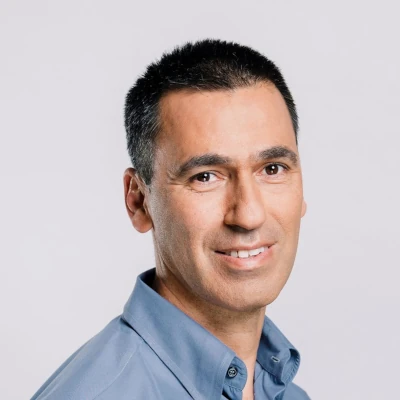
Almog Aley-Raz

Almog Aley-Raz
ECS05 – CorNeat Vision
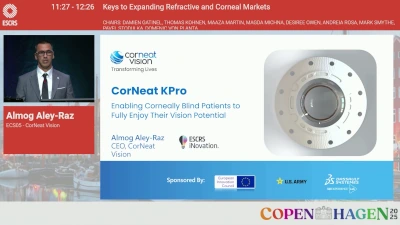
Company website: www.web.com
CorNeat Vision: How a novel synthetic biomaterial can impact global blindness – latest clinical updates from the EverPatch+ launch, CorNeat KPro clinical trial, and first implantations of the eShunt.
- Aley-Raz1,*
1R&D, CorNeat Vision Ltd, Raanana, Israel
CorNeat Vision was established 9 years ago with the primary goal of developing and commercializing the CorNeat KPro, an artificial cornea. This implant and its novel implantation procedure enable corneally blind patients to completely and immediately rehabilitate their vision following a relatively straightforward procedure without the need for donor tissue, which is limited in supply. The CorNeat KPro’s long-term goal is to significantly improve the current standard of care (keratoplasty) by providing a scalable solution with predictable and long-lasting optical performance equivalent to a perfect cornea.
The underlying material technology developed by the company, EverMatrix, enables the permanent integration of a synthetic lens with resident ocular tissue and presents a significant opportunity. EverMatrix is the first non-degradable biomaterial that seamlessly and permanently embeds with living tissue without triggering a significant chronic inflammatory response. Its durability and flexibility, combined with its biomechanical integration capabilities, support a variety of use cases with applications spanning every field of surgery.
CorNeat Vision is at the forefront of ophthalmic innovation with its flagship product, the CorNeat KPro, which is progressing in the clinical phase with promising and impactful results. The company also offers a unique synthetic permanent scleral reinforcement matrix for ocular surface surgeries, EverPatch+ (FDA cleared). The device is being soft-launched to the market, gradually replacing tissue patches used in glaucoma shunt and other ocular surface surgeries. The company’s third product, eShunt, is a unique glaucoma drainage device that extends minimally invasive surgeries to severe and refractory glaucoma patients. The device leverages the EverMatrix technology to integrate with the eyewall and avoid encapsulation around its outlet, which is uniquely positioned in the orbital fat. The eShunt is currently in first-in-human implantations. Initial results obtained in a clinical trial in glaucomatous dogs demonstrate the device’s lasting capability to reduce IOP to the low teens.
Company website: www.corneat.com
-

William Link

William Link
ECS06 – EyeDura Therapeutics
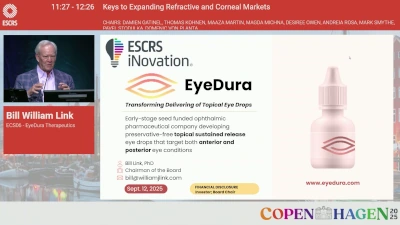
Company website: www.web.com
EyeDura Therapeutics – Transforming Anterior and Posterior Ocular Drug Delivery
- Link1,*
1EyeDura Therapeutics, New York, United States
EyeDura Therapeutics is an early-stage ophthalmic pharmaceutical company developing preservative-free topical sustained release eye drops that target both anterior and posterior eye conditions. Current approaches to ocular drug delivery continue to face critical challenges due to various barriers in the eye. For anterior conditions, patients endure frequent dosing regimens that create peaks and troughs in drug concentration. For posterior conditions, patients must undergo invasive injections or implants. These approaches lead to poor patient compliance, significant logistical burdens, and high costs to the payors.
EyeDura is poised to transform how topical eye drops are used. A single drop of the topical sustained release (TSR) formulation will deliver therapeutic levels of drug for seven days or longer. The TSR vehicle is compatible with most drugs currently used in ophthalmic products including both small molecules and biologics.
EyeDura formulation has a novel mechanism of action. During a blink, the aqueous layer is selectively removed while the lipid layer stays on. The formulation resides on the lipid layer and therefore remains on the surface for extended periods and provides a stable depot. The product is preservative free.
Our lead asset is Topical Sustained Release formulation of Insulin and it targets neurotrophic keratitis (NK), with an IND filing planned for 1Q2026.
We ran a probing trial in Central America where we treated 10 patients with persistent epithelial defects with the topical sustained release insulin formulation. After two drops per week of treatment with our formulation, the epithelial defects healed completely in all ten cases within a month. This is a remarkable finding and needs further clinical studies in NK patients.
We’ve also demonstrated our platform’s ability to deliver medication to posterior eye structures. We dosed five patients with the topical sustained release insulin drops at two drops per week and were able to achieve therapeutic levels of insulin up to 5 ng/mL in the vitreous. Literature shows that insulin restores retinal ganglion cell functional connectivity and promotes visual recovery in glaucoma.
We have a dual path for revenue generation. The first is to develop our internal assets beginning with NK and explore licensing opportunities for the asset. In parallel, we plan to develop strategic collaborations with ophthalmic companies to incorporate their drug into our platform technology.
Our technology is protected by strong global IP with eight issued and eight published patents extending through 2044. Our board, leadership team, and advisors bring deep expertise in ophthalmology, drug development, and commercialization.
We are seeking a $25M Series A investment and a lead investor to advance our NK program through clinical development, Build our development, regulatory, and operations capabilities, and finally, expand our strategic partnerships.
Company website: www.eyedura.com
-
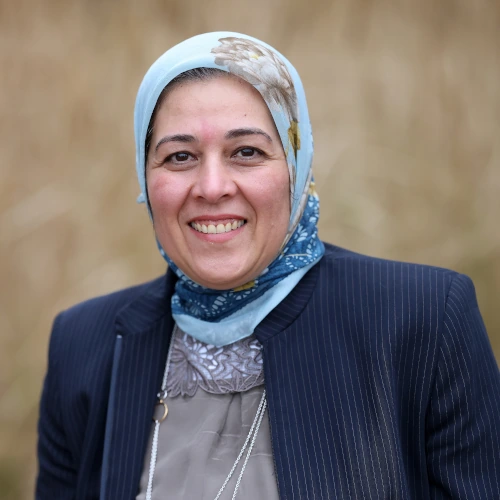
Rania Maklad
OCUWELL
Rania Maklad
OCUWELLECS07 – OCUWELL
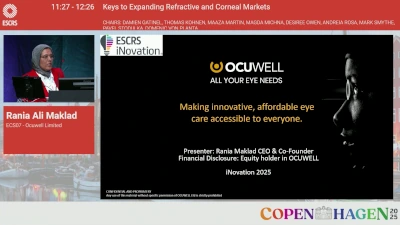
OCUWELL: Transforming Ocular Diagnostics with Precision
- A. Maklad1,*
1Ocuwell Limited, Liverpool, United Kingdom
The Problem: Problem
Corneal disorders, including high myopia, astigmatism, cataract, keratoconus, dry eyes, and corneal dystrophies affect over 850m people worldwide. These conditions contribute to an estimated 43 million cases of blindness and 217 million cases of moderate to severe visual impairment.
Diagnosis and management of corneal disorders necessitates access to corneal topography devices. However, these devices are often expensive and bulky, unsuitable for children, bedridden and psychiatric patients, and require travel to specialised clinics, resulting in delayed treatment. Our 2021 survey showed that over 80% of UK optometry clinics and 40% of specialised tertiary clinics lack access to these devices – and the situation is worse in developing countries, leading to 28% of patients with corneal disorders remaining undiagnosed in the early stages. Furthermore, over 60% of newly diagnosed cases in some developing countries are classified as severe upon initial presentation, resulting in serious permanent visual acuity losses.
Affordable, portable corneal topography devices are urgently needed for the optimal management of corneal abnormalities, including early detection of ectasia, optimising soft and rigid contact lens fitting (myopia control), and follow-up surgical interventions.
OCUWELL’s innovative technology aims to address this global health need.
Importance
Timely diagnosis and effective management of eye conditions can significantly improve the quality of life for millions of people, prevent vision loss, and reduce the burden on healthcare systems. The Lancet Global Health Commission published their comprehensive findings in 2021[9], illustrating the extent of the burden and the health inequalities present. By providing an affordable and accessible solution, OCUWELL can empower healthcare providers to make informed decisions and deliver personalised care to patients, filling the current gap in the market and meeting the global demand for advanced eyecare solutions.
The Solution: Our technology aims to significantly reduce the risk of blindness and visual impairment caused by corneal disorders such as high myopia, astigmatism, keratoconus, and corneal dystrophies, with future development plans including the detection of dry eye disease. By equipping healthcare professionals with advanced, accessible diagnostic tools, we are working to transform the standard of care for corneal conditions, address healthcare inequalities, and improve access to timely, remote diagnostics and progression monitoring — directly supporting UN Sustainable Development Goal 3: Good Health and Well-Being.
Our unique selling proposition lies in delivering full corneal topography through a low-cost, portable, hand-held device that can be used in any setting. This enables early detection and management of conditions that represent a £1.25 billion global market opportunity.
By replacing bulky hardware components with sophisticated software modules, our device offers highly precise analysis at just 60% of the cost of the most affordable systems currently on the market — making high-quality eye diagnostics more accessible than ever.
Company website: https://www.ocuwell.com/
-
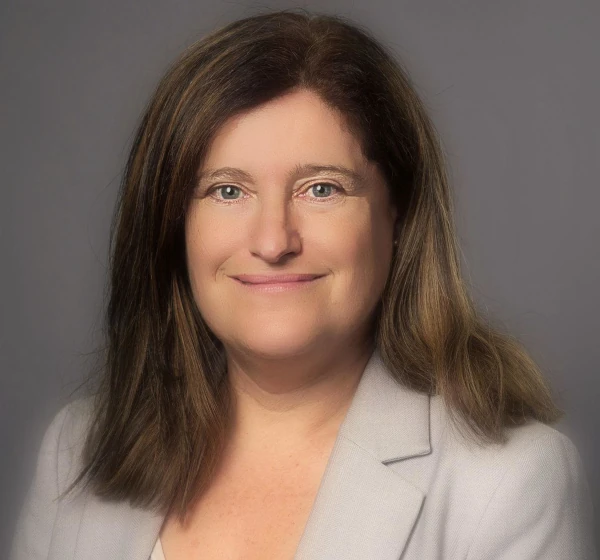
Susana Marcos

Susana Marcos
ECS08 – Simulation of multifocal corrections in the clinic
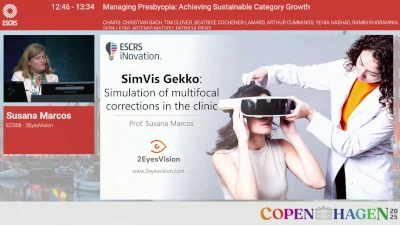
Company website: www.web.com
Simulation of multifocal corrections in the clinic
- Marcos1,2,*
1University of Rochester, Rochester, United States, 2CSIC, Madrid, Spain
PROBLEM & UNMET NEED
Presbyopia is a non-preventable, gradual, and irreversible eye condition characterized by the loss of the ability to focus on near objects. It causes significant visual symptoms in over 80% of the population above the age of 50—more than 2 billion people by 2024. Similarly, cataracts are age-related opacifications of the eye’s natural lens. As of 2025, they affect
over 50% of individuals over 75 years old—approximately 110 million people. Cataract surgery is among the most frequently performed procedures worldwide, with around 30 million surgeries conducted annually (second only to childbirth).
Surgery is the standard treatment for both conditions. It involves replacing the eye’s crystalline lens with an artificial intraocular lens (IOL). There are over 100 different IOL models available from more than 30 manufacturers, each offering a distinct visual experience. However, the effect of each lens is difficult to convey, and patients cannot preview their
postoperative vision. As a result, lens selection is typically made through a simple conversation between doctor and patient, without incorporating the patient’s feedback or preferences.
This suboptimal selection process leads to reduced postoperative satisfaction and poses a significant barrier to the adoption of multifocal lens corrections.OUR TECHNOLOGY & SOLUTION
SimVis technology is based on temporal multiplexing using tunable lenses (TLs), which change optical power in response to electric signals. 2EyesVision’s proprietary technology allows presbyopic and cataract patients to experience the real world through simulations of existing intraocular lenses—enabling them to “try on” different visual corrections prior to
surgery and provide feedback that informs the selection of the most appropriate IOL.
Our product, SimVis Gekko2, is a visual simulator for presbyopia and cataract surgery that, for the first time, enables patients to test multifocal corrections before implantation. It is a binocular, head-mounted, see-through optical device that provides a natural visual experience.Company website: www.2eyesvision.com
-
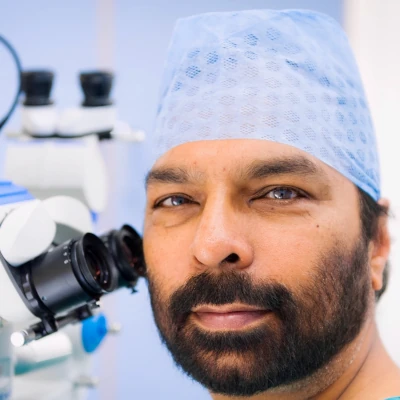
Milind Pande

Milind Pande
ECS09 – CustomLens Ai
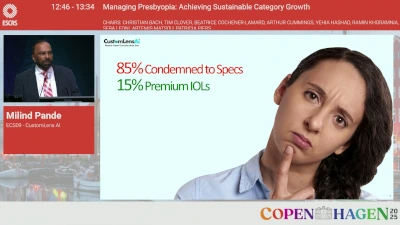
Company website: www.web.com
CustomLens Ai: Personalising Vision, Scaling Precision
- Pande1,*
1Ophthalmology, Vision Surgery & Research Centre, North Ferriby , United Kingdom
CustomLens.ai is a cloud-based comprehensive lens surgery expert system designed to automatically generate complete surgical prescriptions inclusing intraocular lens (IOL) selection and surgical planning through explainable AI. CustomLens Ai is proud to be part of Microsoft for Startups.
Built by surgeons, for surgeons, it delivers personalised surgical plans and multidimensional functional vision outcomes tailored to each patient’s unique biometric profile and the operating surgeon’s preferences. It is a full lens surgery system which provides full outciomes analysis, alternative outcoime scenarios. It aims to be the leading AI company in lens surgery by continuing to develop innovations in AI which make an actual difference to unaided vision outcomes.
At the heart of CustomLens.ai is a proprietary, symbiolic AI based expert system that replicates expert-level decision-making. It integrates historical outcomes, preoperative diagnostics, and nuanced surgical judgement into a single intelligent interface—bridging the gap between standard formulae and real-world surgical practice. It also provides for multidimensional functional vision outcomes presented in a patient friendly education system called VisionCoach AI.
CustomLens Ai represents the next step in surgical intelligence—where data, human judgement, and intelligent automation come together to deliver better vision, at scale. It makes acheiving premium vision outcomes easy for every surgeon.
Company website: https://customlens.ai
-
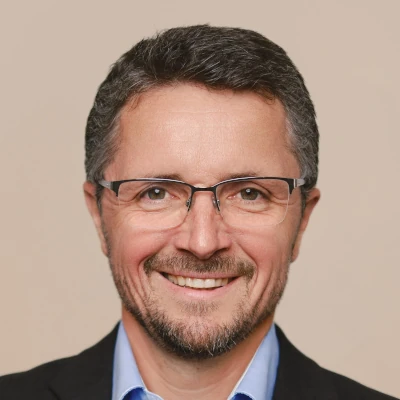
Olivier Benoit

Olivier Benoit
ECS10 – Glaucoma Surgery Reinvented
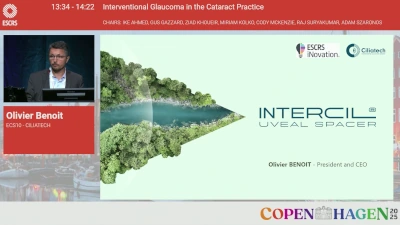
Company website: www.web.com
Glaucoma Surgery Reinvented: Ab Externo Supraciliary Approach with No Bleb, No Cleft, and Preserved Anterior Chamber
- Benoit1,*
1CILIATECH, Annecy, France
A Breakthrough Approach to Glaucoma Treatment: “No Anterior Chamber, No Bleb, No Cleft”
CILIATECH has developed a truly novel ab externo surgical method for treating glaucoma, centered around a next-generation implant called INTERCIL, recently CE-marked for both primary open-angle glaucoma (POAG) and primary angle-closure glaucoma (PACG).
Unlike existing techniques—including filtering surgeries and angle-based minimally invasive glaucoma surgeries (MIGS)—this new ab externo approach does not involve the anterior chamber, creates no filtration bleb, and requires no angle disruption. INTERCIL is uniquely postionned in the supraciliary space, engaging the uveoscleral outflow pathway while preserving the eye’s natural anatomy. This innovative positioning enables strong and durable intraocular pressure (IOP) reduction while minimizing postoperative risks.
INTERCIL acts as a uveal spacer, creating a controlled separation in the supraciliary space to promote aqueous outflow via both anterior and posterior uveoscleral pathways.
Clinical results from a pilot study involving 56 patients (29 POAG, 28 PACG) are highly promising. Using the final device design and updated surgical technique:
- Mean baseline IOP: 23.5 ± 1.7 mmHg and 1.8 ± 0.8 medications
- Mean IOP at 12 months (n=44): 14.1 ± 3.0 mmHg and 0.2 ± 0.6 medications, 86% of patients are medication free
- Mean IOP at 24 months (n=39): 13.9 ± 3.1 mmHg and 0.3 ± 0.7 medications, 77% of patients are medication free
- No difference in efficacy between POAG and PACG groups
The procedure showed an excellent safety profile:
- No serious adverse events
- No cases of clinical hypotony, inflammation, implant migration, or foreign body reaction
- Smooth surgical learning curve with accurate implant placement
Despite no bleb, no cleft, and no anterior chamber intervention, INTERCIL delivers IOP reduction in the low mid-teens range with a great safety profile. This ab externo cilioscleral interposition technique offers a powerful, safe alternative for patients who need strong IOP reduction but wish to avoid the risks of invasive filtering procedures.
Company website: www.cilia.tech
-
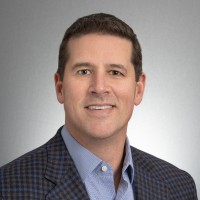
Shawn O’Neil

Shawn O’Neil
ECS11 – FLIGHT by ViaLase
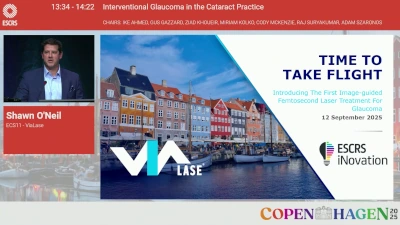
Company website: www.web.com
FLIGHT by ViaLase: The First Noninvasive Femtosecond Laser Procedure for Glaucoma
- England1,*
1ViaLase, Inc, Aliso Viejo, United States
ViaLase is a clinical-stage medical device company pioneering FLIGHT (Femtosecond Laser Image-Guided High-Precision Trabeculotomy), the first and only noninvasive femtosecond laser procedure designed to treat primary open-angle glaucoma. FLIGHT precisely creates a channel through the trabecular meshwork to enhance aqueous outflow—without requiring incisions, implants, or entry into the anterior chamber.
ViaLase was founded by Dr. Tibor Juhasz, a physicist, inventor, and entrepreneur widely recognized for introducing femtosecond laser technology to ophthalmology. He was a founding figure behind IntraLase (bladeless LASIK) and LenSx (laser cataract surgery), both of which transformed standards of care and were acquired by major strategics. With ViaLase, Dr. Juhasz brings his track record of category-defining innovation to the field of glaucoma.
The ViaLase system integrates high-resolution OCT imaging with femtosecond laser precision, enabling image-guided, nonincisional targeting of outflow structures. The procedure is designed to be performed outside the operating room and supports repeatability if additional IOP reduction is needed.
ViaLase is addressing a critical unmet need between medical therapy and surgery, offering a novel, nonincisional solution for millions of patients with mild to moderate glaucoma.
Company website: www.vialase.com
-
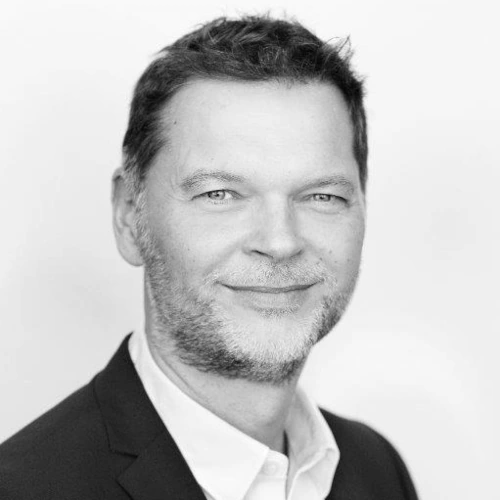
Henrik Nagel

Henrik Nagel
ECS12 – MistGo®
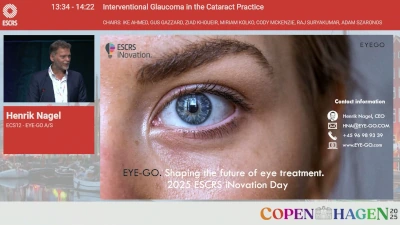
Company website: www.web.com
MistGo® is an innovative alternative to the conventional eye drop bottle, designed to help patients administer their eye medication in a more precise and user-friendly way. A better user experience translates into higher patient compliance, healthier eyes, and higher quality of life for patients.
- Nagel1,*
1Denmark Technical University, Copenhagen, Denmark
The Problem: EYE-GO addresses a large unrealized potential in pharmaceutical companies – and at the same time, we contribute to patients’ quality of life!
Currently, eye patients have to put up with the familiar eye drop bottles. Data shows that up to 75% do not receive the right treatment with the eye drop bottle for various reasons. Among other things, because it is too much of a hassle with the eye drop bottles. As a result, patients probably do not achieve satisfactory health results from the treatment.
However, it is also a huge problem for the pharmaceutical company that the desired treatment effect is not achieved, and business potential is missed, ultimately for society, which ends up with much higher costs for the healthcare system than necessary.
The Solution: EYE-GO’s solution is a new generation of ophthalmic drug delivery systems.
EYE-GO’s solution removes all the barriers known from eye drop bottles and realizes the full potential of the drug, so the actual result is the same as what everyone expected.Our solution is superior in the following parameters to conventional eye-drop bottles:
– Micro-dosing with precision on the cornea, 6 µL, no overmedication. Eye-drop bottles, and vial dose between 30-50 µL.
– Ease of use and comfort for the patient, with the head in any position.
– Independent of the patient’s motor abilities. All other delivery systems depend on the patient’s ability to hold the dosing unit in the correct position in front of the eye/head.
– The risk of cross-contamination is very low.
– Preservative-free drug compatibility.
– Viscosity window, 1 – +500 cP. Other delivery systems that offer preservative-free drug compatibility have a narrow window of 1 – 15 cP.
Previous Edition Emerging Company Showcase Speakers
2024
Meet the 2024 Emerging Company Showcase Speakers
-
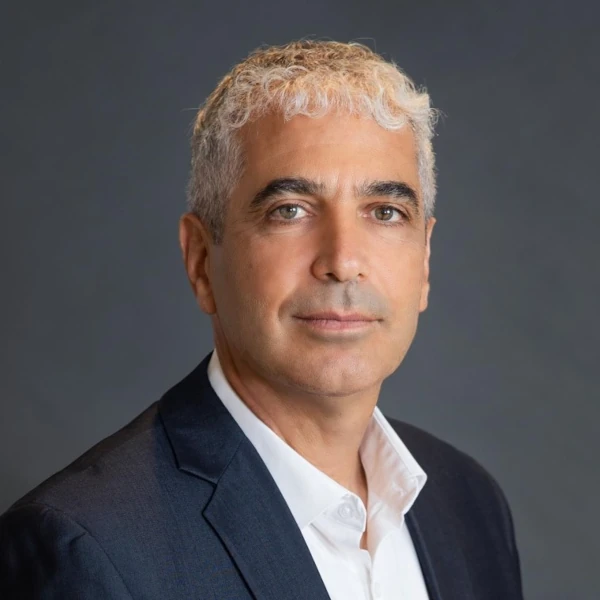
Ran Yam
NovaSight, Airport City, Israel
Ran Yam
NovaSight, Airport City, IsraelECS01
NOVASIGHT IS A GROWING MEDICAL DEVICE COMPANY WITH ITS FLAGSHIP PRODUCT – CURESIGHT™ – FDA CLEARED AND CE MARKED REMOTE DIGITAL EYE TRACKING BASED AMBLYOPIA TREATMENT SYSTEM, THE ONLY DIGITAL DICHOPTIC THERAPY FOR AMBLYOPIA PROVEN TO BE NON-INFERIOR TO THE PATCH.
R.Yam1,*
1NovaSight, Airport City, Israel
Established in 2016, NovaSight is a growing ophthalmology medical device company with a vision to change the lives of millions by introducing eye-tracking-based vision care solutions and data analytics into fun and engaging medical devices with an emphasis on the unique needs and attention spans of children. NovaSight is focused on three main segments: Amblyopia treatment, Myopia prevention and Vision diagnostics.
Commercially available in the US and Italy since early 2023, CureSight™ is an FDA-cleared and CE-marked amblyopia treatment system, designed to replace the traditional eye patching. The treatment is carried out while the patient watches their favorite streamed content from the comfort of their home. To date, CureSight is the only solution that has proven effective in a pivotal study against the gold standard patching in children.
By tracking the gaze position of the dominant eye in real-time, the CureSight system blurs its center of vision, while keeping the rest of the image sharp, providing the amblyopic eye with a normal, high-contrast, image. This stimulates the brain to complete the blurred image from the amblyopic eye, improving its acuity and developing stereoacuity as the eyes learn to work together. In addition, the CureSight system is connected to a dedicated cloud platform which allows the physician to monitor treatment progress and compliance remotely.
Since launch earlier last year, CureSight had gained strong adoption by both eye care providers and patients, with over 250 eye care providers already enrolled in the CureSight Referral Program. NovaSight is continuously onboarding additional prominent clinics, resulting in the active availability of the CureSight Referral Program in 35 states with over 650 patients referred so far.
The company’s goals include a global launch of CureSight, Europe launch of the EyeSwift PRO, and further development of additional products.
Company website: https://nova-sight.com/
-
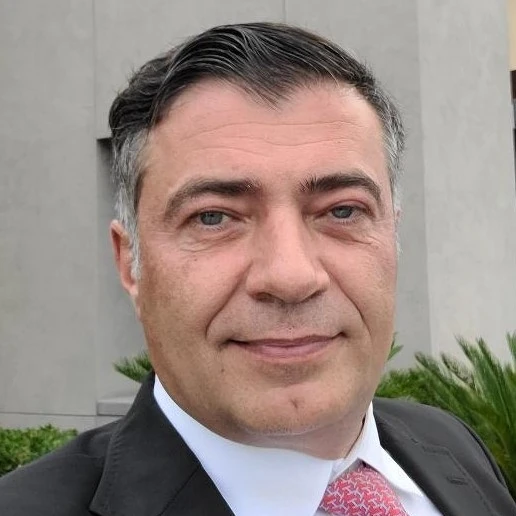
Dimitri Chernyak
Intelon Optics, Woburn, United States
Dimitri Chernyak
Intelon Optics, Woburn, United StatesECS02
MEASURING OCULAR BIOMECHANICS BY BRILLOUIN IMAGING
D.Chernyak1,1,*
1Intelon Optics, Woburn, United States
Intelon Optics is a medical device company focusing on the development and commercialization of the Brillouin Optical Scanner System (BOSS™), a technology that enables non-invasive, next-generation point-by-point biomechanical imaging of living tissue and cell structures, with initial applications in Eye care (Ophthalmology) and Fertility (IVF – In Vitro Fertilization).
In Ophthalmology, BOSS delivers novel diagnostic solutions to eye care professionals for high-level decision-making confidence based on biomechanical properties of the eye. Primary clinical applications are early detection of corneal deseases, refractive surgery screening and customization, reduction of post-cataract surgery astigmatism with custom AKs and LRIs. BOSS core technology, the ultra-narrow bandwidth laser and the Brillouin spectrometer, provides a common platform engine for all its medical applications.
Company website: www.intelon.com
-

John C. Berestka
Northwest Eye, Minneapolis, United States
John C. Berestka
Northwest Eye, Minneapolis, United StatesECS03
LIGHTFIELD MEDICAL: AUTOMATED CAPTURE OF THE SLIT LAMP EXAM—REINVENTING AN 85- YEAR OLD TECHNOLOGY
J. C. Berestka1,*
1NORTHWEST EYE, MINNEAPOLIS, United States
The ophthalmic slit lamp–the heart and soul of ophthalmology–has not seen any innovation in decades. The current slit lamp exam paradigm requires the doctor to be present in the room with the patient. The slit-lamp exam is ephemeral and cannot be digitally saved. Existing slit lamp cameras slow down the encounter, provide inadequate images and cannot be delegated to a typical technician. Limitations in current slit-lamp technology preclude adequate telemedicine in ophthalmology and throttles ophthalmologist productivity.
Ophthalmologists have been able to delegate retinal and optic nerve imaging to technicians for decades. The missing link in ophthalmology is a way to automatically capture the slit-lamp exam. Our medical device uses proprietary technology to capture the entire slit-lamp exam. A minimally trained technician only needs to align the device on the pupil and press a button. The device takes over and then images the anterior segment for the ophthalmologist. The eye doctor can then navigate through the the exam in any order using gestures on an iPhone and iPad. Patients can now see their own slit-lamp findings either in the office or in the comfort of their home.
Our patented technology (4 US and 1 UK patent granted) will allow eye doctors to more efficiently see patients by delegating exam acquisition to technicians. imagine a scenario where postop or brief exam patients are seen by a technician at a satellite office close to their home. The exam could later be reviewed by an ophthalmologist in between surgeries. Findings and instructions could be communicated back to the patient by a quick video text.
Our medical device will be increasingly needed as eye care is about to experience a productivity crunch. The US National Eye Institute predicts a 24% increase in ophthalmology demand by 2023 due to an aging population, yet the ophthalmology supply is expected to decline by 12% during the same period.
Our product will allow the entire slit-lamp exam to be fully documented for the first time. With our technology eye exams can now be compared from visit to visit, and from doctor to doctor. The standardized lighting and viewing angles will create a homogenous image database for artificial intelligence.
Patients can be given a copy of their eye exam to view on their phones, in much the same way that patients can now scroll through their MRI exams in apps such as MyChart in the US.
Currently, less than 1% of eye exams are done through telemedicine, because until now there was no good way to capture the examination of the front of the eye.
Our device will cost half as much as a wide-field retina camera such as Optos, providing value to patients and doctors. Our medical device could bring eye care to remote areas of the world that are currently underserved by eye doctors.
Company website: https://lightfieldmedical.com
-
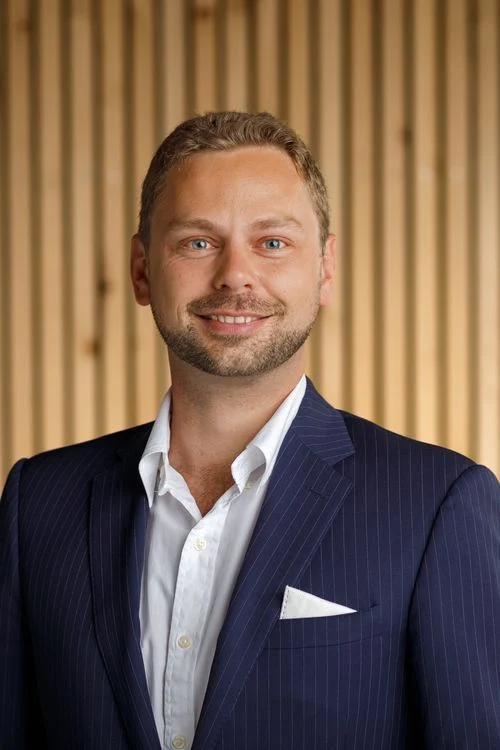
Phil Norris
machineMD, Bern, Switzerland
Phil Norris
machineMD, Bern, SwitzerlandECS04
MACHINEMD LAUNCHES NEOS™ – THE WORLD’S FIRST NEUROPHTHALMOSCOPE
P. Norris1,*
1machineMD, Bern, Switzerland
machineMD is a medical device startup innovating at the intersection of neuroscience and ophthalmology. The company was founded in 2019 as a spin-off from the Eye Movement Laboratory of the University Hospital of Bern, Switzerland, where it retains headquarters, and now also has a subsidiary in Boston, USA.
We believe objective eye exams increase healthcare provider efficiency, reduce clinical error and improve patients’ quality of life.
Launched in 2024, machineMD’s flagship device is neos™ – the world’s first neurophthalmoscope – an automated medical device that supersedes the need for manual assessments of eye movements and pupillary function that are conducted daily by optometrists, comprehensive ophthalmologists, and general neurologists.
Current starndard of care is manual, time-intensive, subjective examinations. Misdiagnosis in primary and secondary care is evident in 50% of neuro-ophthalmic referrals, leading to significant harm for 26% and unnecessary procedures for 80% of those patients. Median referral time to a neuro-ophthalmologist is 200 days, with a recognized shortage in filling these subspecialty fellowships and full-time positions.
To address this unmet need, neos™ enables medical assistants to perform a fast, objective, standardized examination of eye movements and pupillary function, leveraging an industry-leading VR headset with gamified stimuli. High-frequency eye tracking enables neos™ to empower primary, secondary, and tertiary care providers with quantitative reports compatible with electronic health record systems.
Abnormalities in eye movements and pupillary function are closely linked to neurological disorders, with the potential to serve as important digital biomarkers for the diagnosis and monitoring of inflammatory and neurodegenative disorders. Together with neurologists, machineMD’s solution is already used to study people living with Multiple Sclerosis, Parkinson’s Disease, Myasthenia Gravis, and beyond.
Company website: www.machinemd.com
-
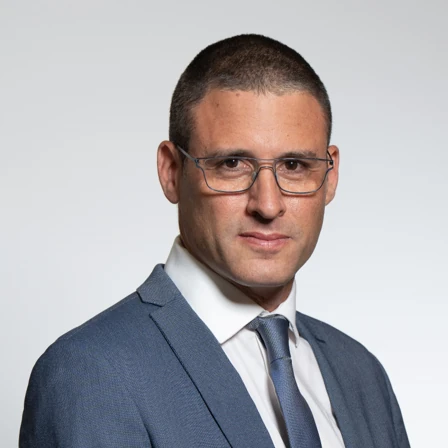
Nir Israeli
EyeMed Technologies Ltd., Ramat Gan, Israel
Nir Israeli
EyeMed Technologies Ltd., Ramat Gan, IsraelECS05
VALENS – POST OPERATIVE ADJUSTABLE INTRAOCULAR LENS
N. Israeli1,*
1EyeMed Technologies Ltd., Ramat Gan, Israel
EyeMed Technologies Ltd. is a medical device start-up company that focus on the Cataract surgery market, specifically, on the Premium IOL segment. The company develops an intra-ocular lens, called VaLens™, which enables the physician to precisely adjust the power of the lens in a non-invasive postoperative, office-based, simple treatment. EyeMed’s vision is to guarantee Emmetropia (best vision possible) and “glasses off” for every lens implanted patient. There is a significant number of cases in which, post-Cataract surgery, the patient is left with a refractive error causing the patient a deficiency in his eyesight because of misalignment of the focal point of the lens. Today there are solutions for residual refractive errors due to IOL misposition, however they are either a burden on the patient (whether it is to wear eyeglasses or to settle for a deficient vision) or they require additional surgical procedures with all attached risks and resources. The VaLens™ innovative solution is intended to be implanted in every Cataract surgery embedding a premium lens and to enable simple solution to all those patients that need a postoperative adjustment after implantation.
Cataract surgery is the most frequent surgical procedure in medicine today, with about 30M surgeries performed annually. The premium IOL segment sales projection, in 2024, is a $3.1B annual revenues. Studies show that 28.8% of Cataract implanted patients have a residual refractive error bigger than 0.5D and 7% more than 1.0D, errors that should be corrected. Ophthalmologists have been implanting multifocal and premium technologies since decades, and still this technology has been used in only 3-9% of lens implantations world-wide. Percentage of usage is not growing even there are lots of efforts in this direction, mostly because surgeons do not feel confident enough to be able to guarantee their valuable patients that they will have emmetropia post-surgery. Additionally, surgeons prefer not to deal with the likelihood of post-surgery touchups that require additional time, resources and are a burden from a patient perspective. EyeMed’s device, the VaLens™, will deliver surgeons the confidence they need with reduced resources and ensure patients with the best results.
The VaLens™ foldable adjustable IOL consists of a nitinol mechanism placed in a haptic-optic cradle. Heating actuators on the nitinol mechanism with a continuous green laser achieve controlled movement of the mechanism and optic. Activation occurs in controlled steps: rotation in 1-degree steps and anterior posterior movement in 0.25D steps with a range of +1.50D. The IOL was tested in vitro and in vivo in a rabbit eye. Foldability and unfolding were demonstrated through a 2.6-mm cartridge.
Company website: www.eyemed.co.il
-
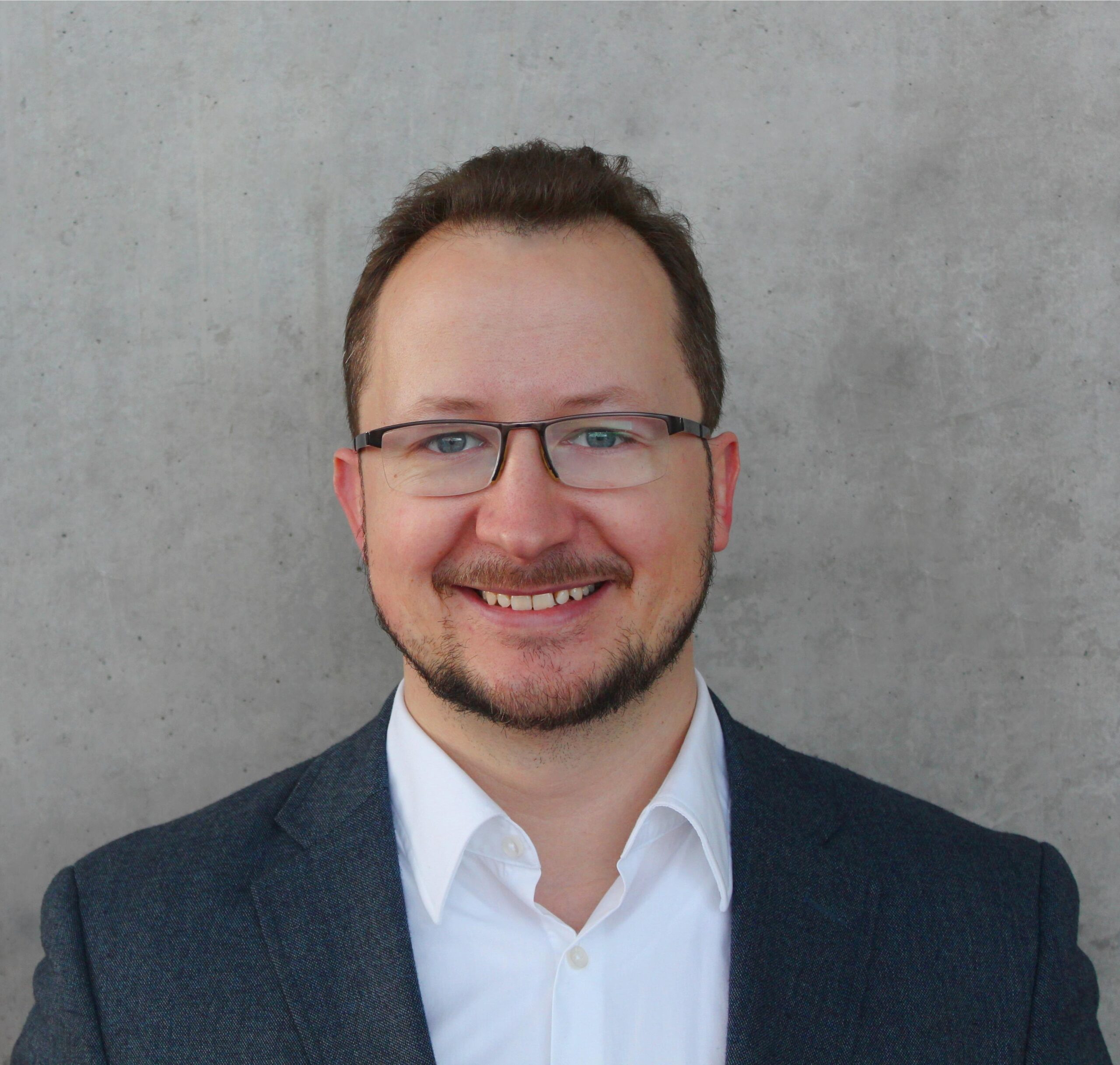
Mikhail V. Tsurkan
TissueGUARD GmbH, Dresden, Germany
Mikhail V. Tsurkan
TissueGUARD GmbH, Dresden, GermanyECS06
SUBSTITUTION REGENERATIVE THERAPIES FOR LIMBAL, ENDOTHELIAL, AND RETINAL DYSFUNCTION
M. V. Tsurkan1,*
1TissueGUARD GmbH, Dresden, Germany
TissueGUARD GmbH is a privately-funded biotechnology company dedicated to developing and producing advanced hydrogel materials as medical devices. Our mission is to create innovative biotechnology solutions for tissue and organoid engineering as regenerative therapeutics.
At TissueGUARD, we have developed proprietary hydrogel materials that are fully defined, sacrificially degradable, and capable of supporting the growth of almost any cell type. Our unique technology allows for the on-demand removal of the device without harming the formed organoids or tissues, enabling the formation of physiological-sized, donor-like grafts. This scaffold-free approach simplifies tissue and organoid implantation, enhances therapeutic outcomes, prevents implantation-associated complications, and significantly reduces regulatory certification burdens in both the EU and the USA.
Our cutting-edge bioengineering capabilities have led to remarkable advancements in ocular regenerative approaches. Our technique enables the formation of corneal endothelium grafts with preformed Descemet-like membranes. It has also been shown to form retinal pigment epithelium (RPE) with preformed Bruch’s membrane. These pioneering tissue graft technologies have demonstrated potential in stabilizing surgical implantation and improving outcomes in ophthalmologic procedures. TissueGUARD’s technology not only addresses the critical shortage of donor tissues but also paves the way for comprehensive regenerative therapies for limbal, endothelial, and retinal dysfunctions.
Company website: https://tissueguard.de/
-
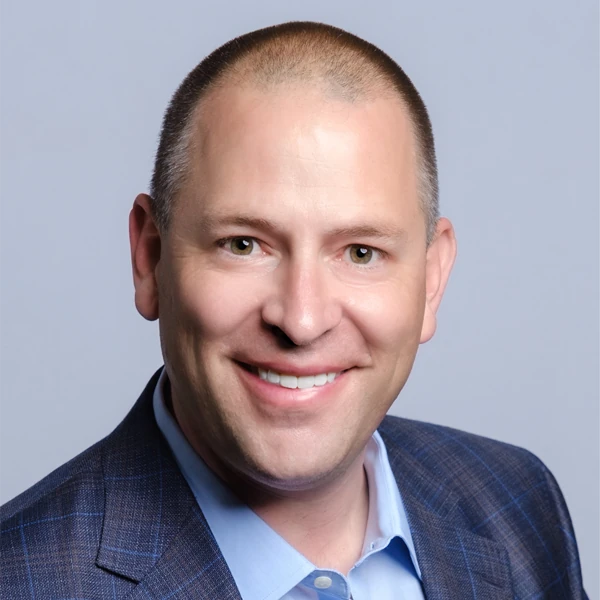
Greg Kunst
Aurion Biotech, Seattle, United States
Greg Kunst
Aurion Biotech, Seattle, United StatesECS07
TRANSFORMATIONAL CELL THERAPY FOR CORNEAL ENDOTHELIAL DISEASE
G. Kunst1,*
1Aurion Biotech, Seattle, United States
Aurion Biotech is a clinical-stage biotech company, whose mission is to restore vision to millions of patients with life-changing regenerative therapies. It received the prestigious Prix Galien award for best start-up in biotech. Its first candidate, AURN001, is for the treatment of corneal edema secondary to corneal endothelial disease, and the first clinically validated cell therapy for corneal care, having received regulatory approval in Japan. The Company has completed enrollment and dosing of subjects in its Phase 1/2 clinical trial in the U.S. and Canada, and expects to share topline data in early 2025. Privately held, Aurion Biotech is backed by Deerfield, Alcon, Petrichor, Flying L Partners, Falcon Vision / KKR, and Visionary Ventures.
Company website: www.aurionbiotech.com
-

Sunil Shah
Aston University, Birmingham, United
Sunil Shah
Aston University, Birmingham, UnitedECS08
A NOVEL HAND HELD UVC EMITTING DEVICE FOR TREATING INFECTIOUS KERATITIS CAUSED BY A WIDE RANGE OF MICROBES THAT IS SIMPLE AND RAPID TO USE IN CLINIC WITHOUT ANY RISK OF INCREASING RESISTANCE THROUGH SPARING THE USE OF TOPICAL ANTIMICROBIAL AGENTS
S. Shah1,*
1Aston University, Birmingham, United Kingdom
We are developing a patented ultraviolet C device to kill corneal infections in humans and animals. The device can be hand held and slitlamp mounted. The infected corneal ulcer is treated for 5 seconds. UVC is effective against bacteria, viruses and fungi and hence can be used for any type of infection either alone or in addition to conventional treatment.
Technology: UVC is well known to be antimicrobial and has been used for sterilisation in many industries. More recently LEDs have become available of the appropriate wavelengths to enable a hand held device to be made. Extensive work has shown that with the dose of UVC being used, there is a 100% kill rate in animal studies with no lasting damage to healthy tissue. There is no microbial resistance.
Patient pool: 600,000 human corneal infections and 6 million animals (primarily cats and dogs) corneal infections per year in USA and Europe. In countries like India, 2 million monocular blindness from corneal infections.
IP Protection: First layer patents granted and second layer pending.
As regulatory hurdles are less with the animal market, plan is to start in that space initially while the human studies and regulatory process is on going. Animal income to help fund human studies.
Device time line: Prototype available Q3 2024 and commercial device available Q1 2025.
Team: A combination of practicing ophthalmologists, academic researchers, ophthalmology entrepreneur, veterinary surgeons and accountant/entrepreneur in multiple spaces
USP: Novel, immediate effect and cost effective in a market that has not had significant changes for many years.
The aim of the presentation would be to help raise awareness and to meet potential investors or partners both for distribution and/or acquisition.
Company website: www.photon-therapeutics.com
-
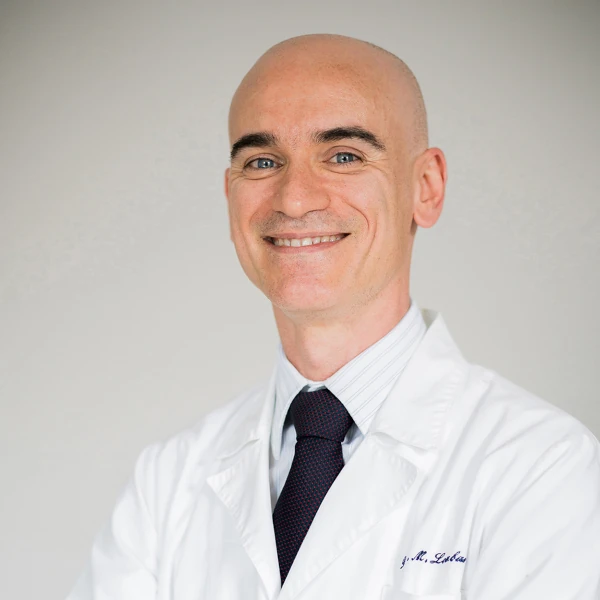
Marco Lombardo
Studio Italiano di Oftalmologia, Rome, Italy
Marco Lombardo
Studio Italiano di Oftalmologia, Rome, ItalyECS09
UNVEILING INCISION-FREE THERANOSTIC TECHNOLOGY FOR THE CORRECTION OF VISUAL DISORDERS
M. Lombardo1,*
1Studio Italiano di Oftalmologia, Rome, Italy
Regensight is pioneering a groundbreaking advancement in eye care with theranostics, a cutting-edge method that revolutionizes the treatment of visual disorders using an incision-free approach. Theranostic-guided UV-A light photo-reshaping leverages the principles of theranostics and the therapeutic potential of UV-A light to non-invasively reshape corneal tissue. This promising technique can treat a variety of visual disorders across all age groups. Theranostics combines diagnostic and therapeutic functions into a single sophisticated platform, involving advanced molecular imaging and targeted UV-A light photo-reshaping process delivered simultaneously. The key aspects of how this technology can revolutionize ophthalmic care include:
- Targeted Drug Delivery: theranostics enables fast and precise targeted delivery of riboflavin to specific regions of the corneas, ensuring optimal therapeutic concentration and enhancing treatment efficacy under UV-A light mediated photo-reshaping procedures.
- Real-Time Monitoring: the integration of diagnostic and therapeutic functions allows for real-time monitoring of treatment efficacy. Molecular imaging technologies provide immediate feedback on how the cornea is responding to treatment, enabling adjustments to be made quickly and accurately.
- Minimizing Invasive Procedures: by eliminating the need for surgical incisions, theranostics reduces the risk of complications, such as infections and corneal scarring.
- Enhanced Patient Experience: patients undergoing incision-free theranostic procedures experience less discomfort and shorter recovery times compared to traditional surgical methods. The non-invasive nature of these procedures can reduce patient anxiety, improve overall satisfaction with care and increase demand for refractive treatments.
The technology has undergone pre-clinical and clinical validation demonstrating the theranostic platform’s capability to predictively personalize therapeutic outcomes for keratoconus. The multicenter, randomized, masked, ARGO trial (NCT05457647) validated the capability of the theranostic platform to treat keratoconus and predict clinical outcomes with 91% accuracy and 95% precision. The clinical trial outcome are published in Ophthalmology, the top-ranked journal in the field. This evidence marks a significant advancement towards predictive personalized care for keratoconus, delivering precise and effective results that will benefit patients and society.
Regensight is now advancing with an innovative platform harnessing the power of theranostics to correct the most prevalent visual disorders across all age groups. The new platform aims to improve uncorrected visual acuity without the need for invasive surgery, particularly in individuals with low-grade myopia and presbyopia. Regensight is seeking investment from corporate investors to support the clinical development of this new platform.
Company website: www.regensight.com
-
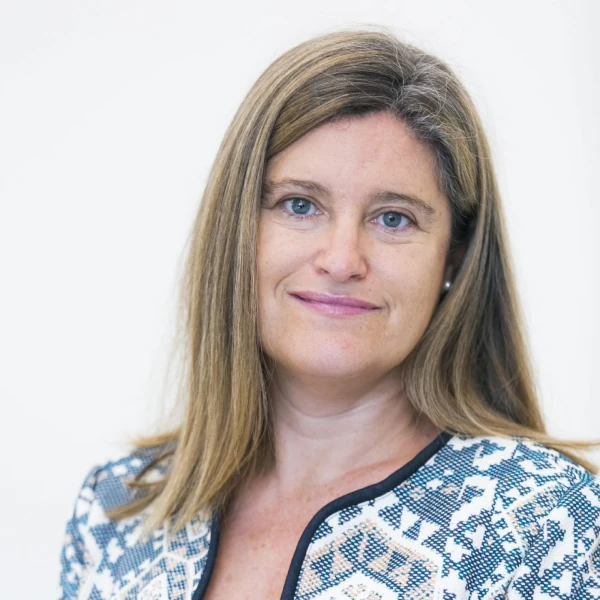
Susana Marcos
CSIC, Madrid, Spain; University of Rochester, Rochester, United States
Susana Marcos
CSIC, Madrid, Spain; University of Rochester, Rochester, United StatesECS10
VISUAL SIMULATION TECHNOLOGY FOR MULTIFOCAL CORRECTIONS BEFORE CATARACT OR PRESBYOPIA CORRECTING SURGERY.
S. Marcos1,2,*
1CSIC, Madrid, Spain, 2University of Rochester, Rochester, United States
UNMET NEED
Presbyopia is a non-preventable, gradual, and irreversible eye condition that involves the loss of the ability to focus on near objects. It causes strong visual symptoms in >80% of the population over the age of 50, >2 billion people by 2024.
There are many types of multifocal lenses, implanted in the eye during presbyopia surgery (and also cataract surgery), each one providing a different visual experience.
The effect of each lens is difficult to explain, and patients cannot experience what their actual vision will be like after eye surgery. The lens to be implanted is selected in a mere conversation, without considering their feedback.
The current suboptimal lens selection process in presbyopia and cataract surgery reduces postoperative satisfaction and is a major barrier to prescribing premium corrections.
OUR TECHNOLOGY AND SOLUTION
SimVis technology is based on temporal multiplexing of tunable lenses (TLs). The lens changes its optical power in response to an electric signal
2EyesVision’s technology allows presbyopic patients to experience the real world through existing intraocular lens models and try them on before implantation, providing feedback to the doctor in order to support the selection of the most suitable IOL
Our first product, SimVis Gekko, is a visual simulator for presbyopia and cataract surgery that for the first time allows patients to try on different premium corrections before surgery. It is a head-mounted, binocular, see-through optical instrument, providing a natural visual experience.
Company website: www.2eyesvision.com
-
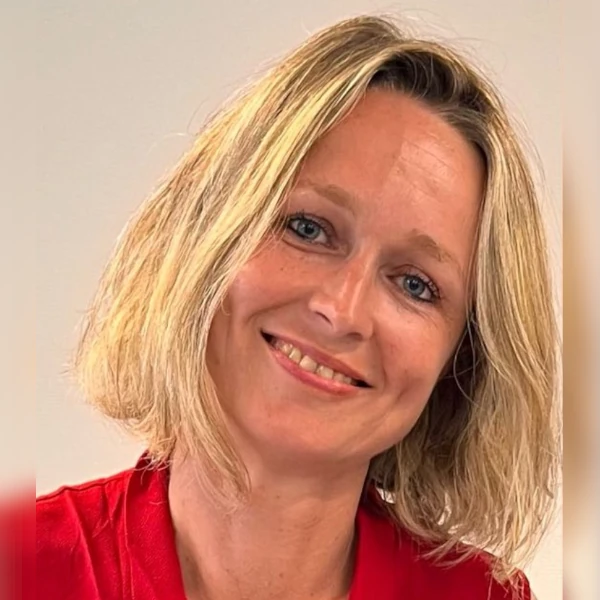
Aurélie Béglé
Kejako, Saint-Etienne, France
Aurélie Béglé
Kejako, Saint-Etienne, FranceECS11
LOW ENERGY FEMTOSECOND LASER TREATMENT TO RESTORE ACCOMMODATION CAPACITY TO THE CRYSTALLINE LENS
A. Béglé1,*
1KEJAKO, SAINT-ETIENNE, France
Purpose
To restore crystallin lens capacity of accommodation by changing its mechanical characteristics, using low energy femtosecond laser.
Methods
We used finite element simulation of the whole eye to understand and model the process of human accommodation and its degradation over time (presbyopia). Our model also allowed us to target treatment.
We tested this treatment on ageing pig lenses ex vivo (stiffer than young lens).
Mechanical characteristics were measured before and after laser treatment and compared to controls.
The same treatment was applied on rabbit in vivo to assess its safety.Results
The delivery of sophisticated femtosecond laser energy pattern shows an ability to soften lens while preserving its transparency (EX-VIVO study) and a potential capacity to restore 1.5 diopters of accommodation.
The treatment is extremely safe, no rabbit has developed cataractogenesis or suffered damage to the retina or cornea (IN-VIVO study).
The coupling between laser and the eye allowing homogeneous and well-localized treatment is safe and repeatable.
Conclusions
The contemplated treatment has shown safety and performance, leading to a preclinical proof of concept.
The development of prototype and optimized and customized treatment protocol will be performed to prepare the first in man clinical test.
Company website: https://www.kejako.com
-
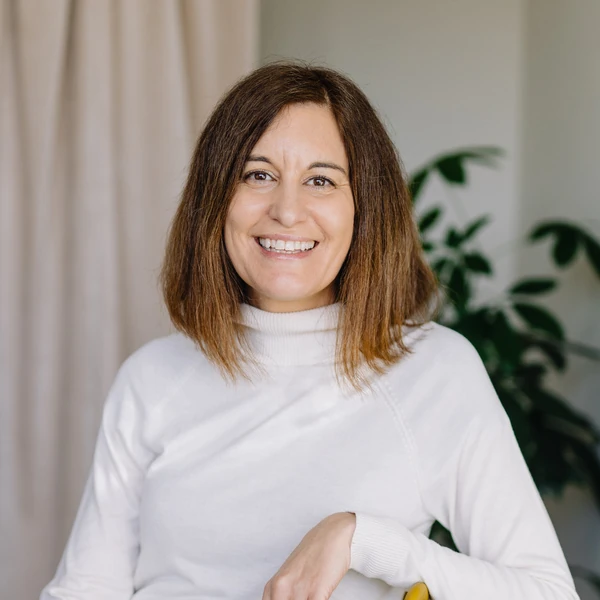
Úrsula Jaén
Ophtec, Groningen, Netherlands
Úrsula Jaén
Ophtec, Groningen, NetherlandsECS12
PRECIZON GO. A NEW CONCEPT OF ENHANCED INTERMEDIATE VISION IOL
Ú. Juén1,*
1Ophtec, Groningen, Netherlands
The evolution of contemporary lifestyle and standards has led to new demands from our patients. Spectacle independence for intermediate distances and high-quality of vision are in the center of such demands. Addressing these needs, Ophtec has developed an innovative intraocular lens (IOL) that represents a significant step forward regarding enhanced intermediate vision. This new IOL is precisely engineered with an ingenious technology to elevate the standard for extended range of vision solutions. Ophtec´s main goal was to create an IOL that would provide an excellent intermediate vision while maintaining the quality standards of monofocal lenses for distance vision. Overcoming this challenge resulted in the development of Precizon Go, a new IOL with a unique and patented diopter profile with combined aspherical aberrations in three distinct areas.
This new Precizon Go IOL has demonstrated excellent performance both in bench and clinical studies. Bench study results show similar MTF curves for both Precizon Go and Precizon Monofocal confirming the high-manufacturing standards of the new design. Additionally, the simulated defocus curve demonstrates a clear advantage of the Precizon Go IOL within the defocus range of -0.50 D to -2 D. On the other hand, outcomes from the clinical study demonstrate an excellent performance of Precizon Go both at far and intermediate distances. Mean monocular best corrected distance visual acuity was of 0,00 ± 0,06 LogMAR, and monocular best corrected intermediate visual acuities were 0,14 ± 0,09 LogMAR and 0,2 ± 0,07 LogMAR at 80cm and 66cm respectively. High rates of patient satisfaction were also found, with 100% and 94% of patients reporting to be very satisfied or satisfied with far and intermediate vision respectively. During the Innovation Day session, more insights on the design, engineering and performance of the Precizon Go IOL will be presented.
Company website: www.ophtec.com
-

Julie Schallhorn
University of California, San Francisco, San Francisco, United States
Julie Schallhorn
University of California, San Francisco, San Francisco, United StatesECS13
DESIGN, EX SITU, AND IN VIVO RESULTS OF THE JELLISEE ACCOMMODATING IOL
J. Schallhorn1,*
1University of California, San Francisco, San Francisco, United States
A sufficiently effective accommodating intraocular lens (IOL) to replace a cataractous or dysfunctional lens is not currently available, despite decades of development efforts. Using known biomechanical properties of the pediatric human lens, a shape changing accommodating IOL was designed and tested.
The JelliSee Accommodating IOL design was tested with FEA analysis and Zemax optical modeling. A prototype IOL was manufactured and tested with a custom lens stretcher and laser measurements. The prototype accommodating IOL was then tested in a primate. Based on the results in bench testing and the primate, the IOL was implanted in 10 human subjects outside the US
FEA analysis and Zemax optical modeling using the known forces of the human eye, predicted the JelliSee accommodating IOL would be capable of an amplitude of accommodation of 7 diopters. Results of optical bench testing and stretcher testing of a prototype JelliSee accommodating IOL also demonstrated excellent visual quality and an accommodation amplitude of 7 diopters. Primate testing demonstrated 7 diopters amplitude of accommodation up to 15 months post implantation. Preliminary results of human implantation have demonstrated a significant and sustained amplitude of accommodation similar to the results of ex-situ modeling and in vivo primate testing.
The JelliSee Accommodating IOL, based on the biomechanics of the pediatric human lens, has demonstrated a significant amplitude of accommodation ex situ and in vivo. Such an accommodating IOL has potential benefits for adults and children with a diseased or dysfunctional lens.
Schallhorn JM, Pantanelli SM, Lin CC, Al-Mohtaseb ZN, Steigleman WA 3rd, Santhiago MR, Olsen TW, Kim SJ, Waite AM, Rose-Nussbaumer JR. Multifocal and Accommodating Intraocular Lenses for the Treatment of Presbyopia: A Report by the American Academy of Ophthalmology. Ophthalmology. 2021 Oct;128(10):1469-1482. doi: 10.1016/j.ophtha.2021.03.013. Epub 2021 Mar 17. PMID: 33741376ESCRS24-ECS-5460
Company website: http://www.jellisee.com/
-
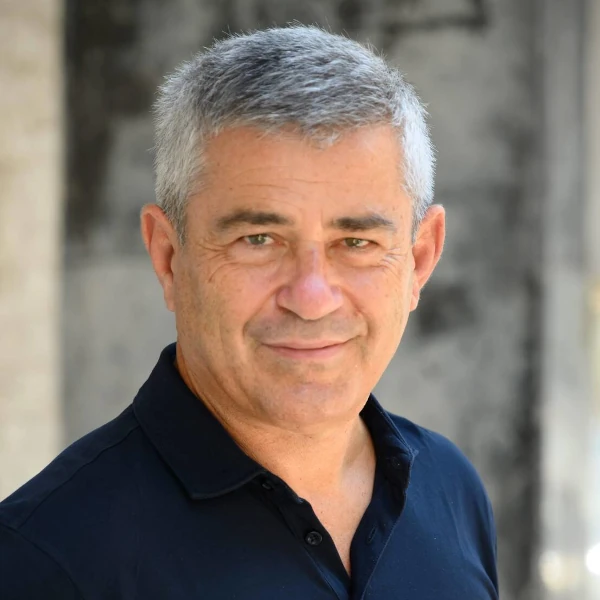
Nikos Stergiopulos
EPFL, Lausanne, Switzerland
Nikos Stergiopulos
EPFL, Lausanne, SwitzerlandECS14
INTRODUCING THE STERGIO VALVE: THE FIRST AUTO-ADJUSTABLE GLAUCOMA DRAINAGE VALVE
N. Stergiopulos1,*
1EPFL, Lausanne, Switzerland
The Stergio glaucoma valve is a novel glaucoma drainage device which dynamically auto-adjusts flow resistance in order to keep IOP at the target levels. Previously, RHeon Medical had developed the eyeWatch system, which was the world’s first adjustable glaucoma drainage device. The eyeWatch system proved to be very efficient in limiting hypotony and produced excellent long-terms results in terms of success rates as well as rates of complications. The eyeWatch device, however, is relatively bulky, expensive to manufacture and requires human intervention for its adjustment. The Stergio glaucoma valve is an auto-adjustable device, requiring no human intervention. Furthermore, it is about 5 times smaller in size than the eyeWatch and it is much simpler and cost-efficient to manufucture. The Stergio valve’s working principle is based on the Starling mechanism and provides for a stable upstream pressure regulation at the desired range, independently of variations in aqueous humor flow and distal resistance. In the early days post-implantation when distal resistance due to fibrosis is minimal, the Stergio valve automatically shuts down to increase resistance and keep IOP in the targeted range, avoiding hypotony. In later stages, as the bleb forms and distal pressure increases, the Stergio valve automatically opens up to lower its resistance and continue keeping IOP in the desired range.
The Stergio valve has been fully tested in vitro and gave outstanding results. The valve is also tested in animals to verify that the presence of fibrosis does not alter its functional characteristics. The next step is a pilot clinical study in humans, which is currently under preparation.
Company website: www.rheonmedical.com
-

Rick Lewis
ViaLase, Inc, Aliso Viejo, CA, United States
Rick Lewis
ViaLase, Inc, Aliso Viejo, CA, United StatesECS15
INTRODUCTING THE FIRST IMAGE-GUIDED FEMTOSECOND LASER TREATMENT FOR GLAUCOMA
R. Lewis1,*
1ViaLase, Inc, Aliso Viejo, CA, United States
ViaLase, Inc. is a globally-minded, venture capital-backed, clinical stage medical technology company located in Aliso Viejo, CA. ViaLase is focused on disrupting the conventional glaucoma treatment paradigm with the introduction of a truly noninvasive image-guided femtosecond laser treatment that enhances glaucoma patient care. With a leadership team that has vast experience developing, designing, manufacturing, and commercializing the first femtosecond lasers for ophthalmic surgery for refractive and cataract patients, ViaLase is now bringing that expertise and innovation to glaucoma patients. ViaLase believes in collaborating closely with health care providers, payers, societies, and patients to inform our product development and commercial activities with the goal of bringing this revolutionary treatment to glaucoma patients across the globe.
Company website: www.vialase.com
-
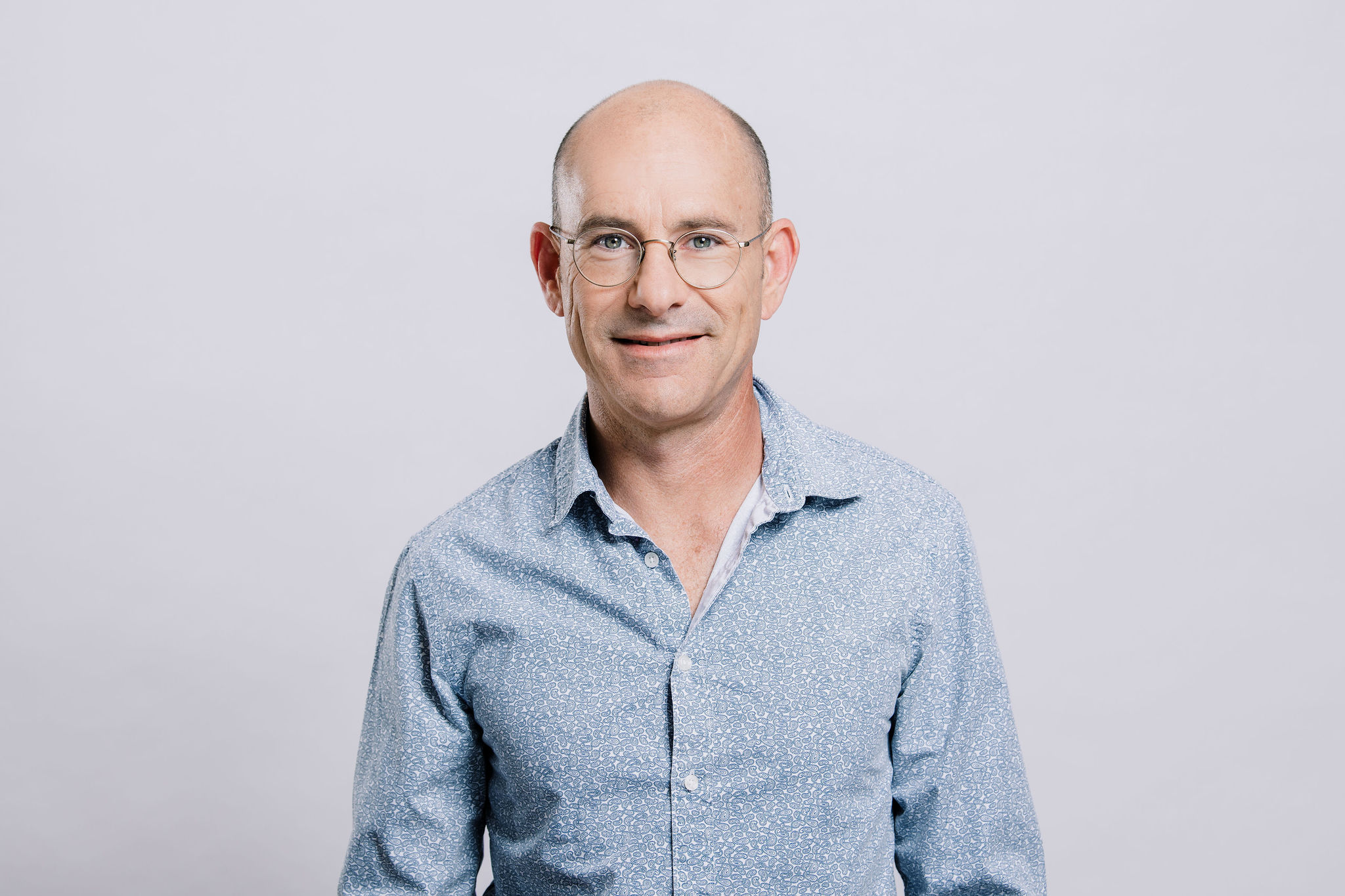
Gilad Litvin
CorNeat Vision, Raanana, Israel
Gilad Litvin
CorNeat Vision, Raanana, IsraelECS16
THE CORNEAT ESHUNT, CORNEAT VISION’S REVOLUTIONARY GLAUCOMA DRAINAGE DEVICE: EXTENDING MINIMALLY INVASIVE SURGERY TO SEVERE AND REFRACTORY PATIENTS
G. Litvin1,*
1CorNeat Vision, Raanana, Israel
CorNeat Vision has developed a number of medical devices, first and foremost the CorNeat eShunt, a revolutionary glaucoma drainage device, that provides, for the first time, a long-lasting, minimally invasive solution for severe and refractory glaucoma patients. This device is designed to regulate the intraocular pressure and addresses the shortcomings of existing solutions. It is efficacious and stable immediately post-op as resistance to flow is dictated by its inlet and tube design and not by a valve or scarring around the outlet. The CorNeat eShunt outlet is uniquely positioned in the intraconal space, an area that does not scar and clog over time. The positive pressure (approx. 4mmHg) in this area reduces the risk of hypotony. The fat in the intraconal space can absorb the drained aqueous humour, without creating a bleb. The device seamlessly integrates with the ocular tissue using an integral non-degradable tissue-integrating patch. This significantly shortens and simplifies the surgical procedure and minimizes the risk of tube exposure. This, plus the fact that there’s no reservoir, reduces the surgical procedure to approximately 20 minutes.
CorNeat Vision products and solutions leverage a unique permanent tissue-integrating material technology, CorNeat EverMatrix™, to address unmet needs in ophthalmology and beyond. The CorNeat EverMatrix™, is a non-degradable biomaterial that enables implants to avoid the foreign body response—an immunological process leading to the rejection and degradation of implanted devices. This challenge fundamentally affects their performance, durability, and therapeutic utility.
The EverMatrix™ seamlessly and permanently embeds with living soft and bone tissue without triggering an inflammatory response. Its durability and flexibility, coupled with its bio-integration capabilities, mark a new era of implants that can:
– Bio-mechanically integrate with surrounding tissue
– Permanently reinforce soft tissue and accelerate healing
– Act as a membrane for guided soft tissue and bone regeneration
– Conceal irritating implants
– Enable sensors to continuously remain in contact with surrounding tissue
The EverMatrix™ is also set to displace harvested and processed human and animal tissues, including scaffolds and extracellular matrices, used in a variety of surgical procedures across diversified fields of medicine.
The features and benefits of the EverMatrix™ were proven histologically and clinically in various pre-clinical and clinical trials, including in humans. Findings demonstrate full fibroblast colonization and abundant collagen deposition with no encapsulation, rendering the EverMatrix™ an integral part of the surrounding tissue. The recent FDA 510(k) clearance of our first product, the CorNeat EverPatch, a synthetic tissue substitute for ocular surface surgeries, continues to validate the usage of the EverMatrix™.
Company website: www.corneat.com
-
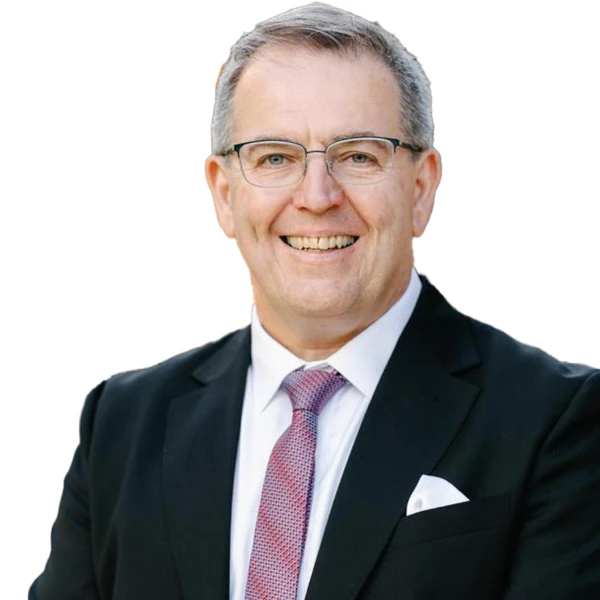
Yaacov Michlin
Biolight, Ramat Gan, Israel; IATI, Herzlia, Israel; VISCI, Ramat Gan, Israel
Yaacov Michlin
Biolight, Ramat Gan, Israel; IATI, Herzlia, Israel; VISCI, Ramat Gan, IsraelECS17
VISCI LTD. – THE SAFEST SOLUTION FOR GLAUCOMA SLOW RELEASE DRUG DELIVERY VIA SUBCONJUCTIVAL IMPLANT
Y. Michlin1,2,3,*
1Biolight, Ramat Gan, 2IATI, Herzlia, 3VISCI, Ramat Gan, Israel
ViSci address the clinical need of non compliance of Glaucoma patients by providing a safe and simple implant that slowly releases Latanprost. Our implant is currently the safest available given it is located in the subconjuctiva. We already shown compeling clinical results in a Phase I/IIa in the US in which our implant maintained IOP below 18 similar to Latanprost for 3 months.
Currently we are in animal clinical study aimed to provide same release profile with a bio-degradable implant. We will have the results before the ESCRS.
ViSci is currently fully funded by Biolight – a VC focusing on ophthalmology and we are looking to partner for further development. We estimate that to get the bio degradable implant approved by FDA we will need ~20-30M USD and it will take ~ 3 years. we have strong patent portfolio and an excellent SAB headed by Dr. Ike Ahmed.
Company website: www.bio-light.co.il
-
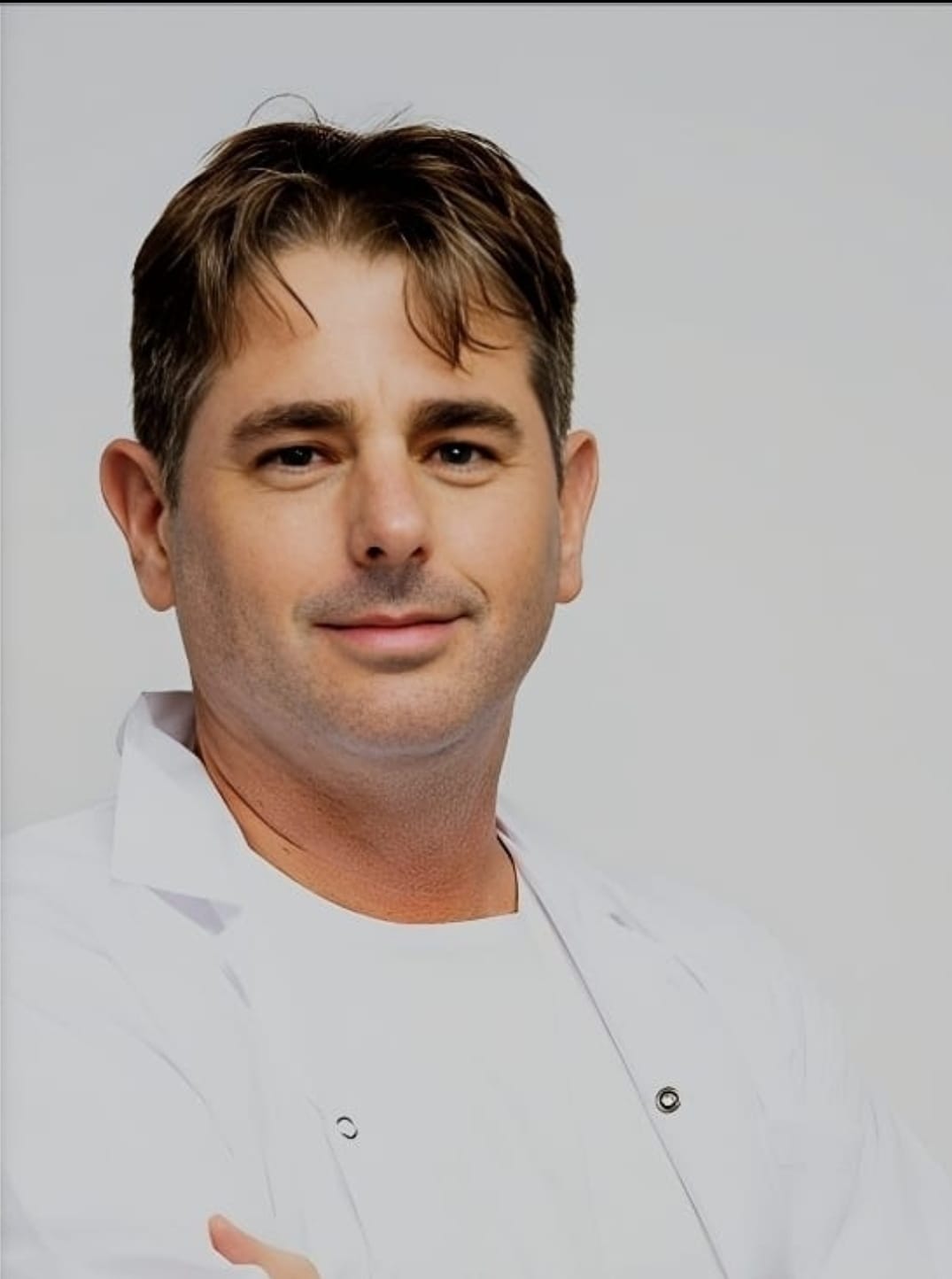
Ofer Daphna
EyeYon, Rehovot, Israel
Ofer Daphna
EyeYon, Rehovot, IsraelECS18
ENDOART UPDATE, NEW HOPE FOR PATIENTS WHO HAVE FAILED ON HUMAN TISSUE, OR WHO ARE NOT SUITABLE FOR HUMAN TISSUE
O. Daphna1*
1EyeYon, Rehovot, Israel
EyeYon is currently commercialising EndoArt in a limited market release in the EU, focusing on the most respected KOL’s who are currently generating Real World evidence, demonstrating safety, durability (we have a patients at +5 years with EndoArt) and efficacy. EyeYon is also working with the FDA and NMPA for regulatory approval in China and the USA.
This forum will allow us to share updates for both the clinical and commercial efforts with EndoArt. Endoart is primarily being used for patients who have had multiple failures on human tissue, glaucoma surgery patients (high probability of failure) and patients who do not want human tissue – people prefer synthetic material vs human tissue. EndoArt is also being used as a backup if there is an issue with the human tissue graft during surgery.
Company website: www.eye-yon.com
2023
Meet the 2023 Emerging Company Showcase Speakers
-
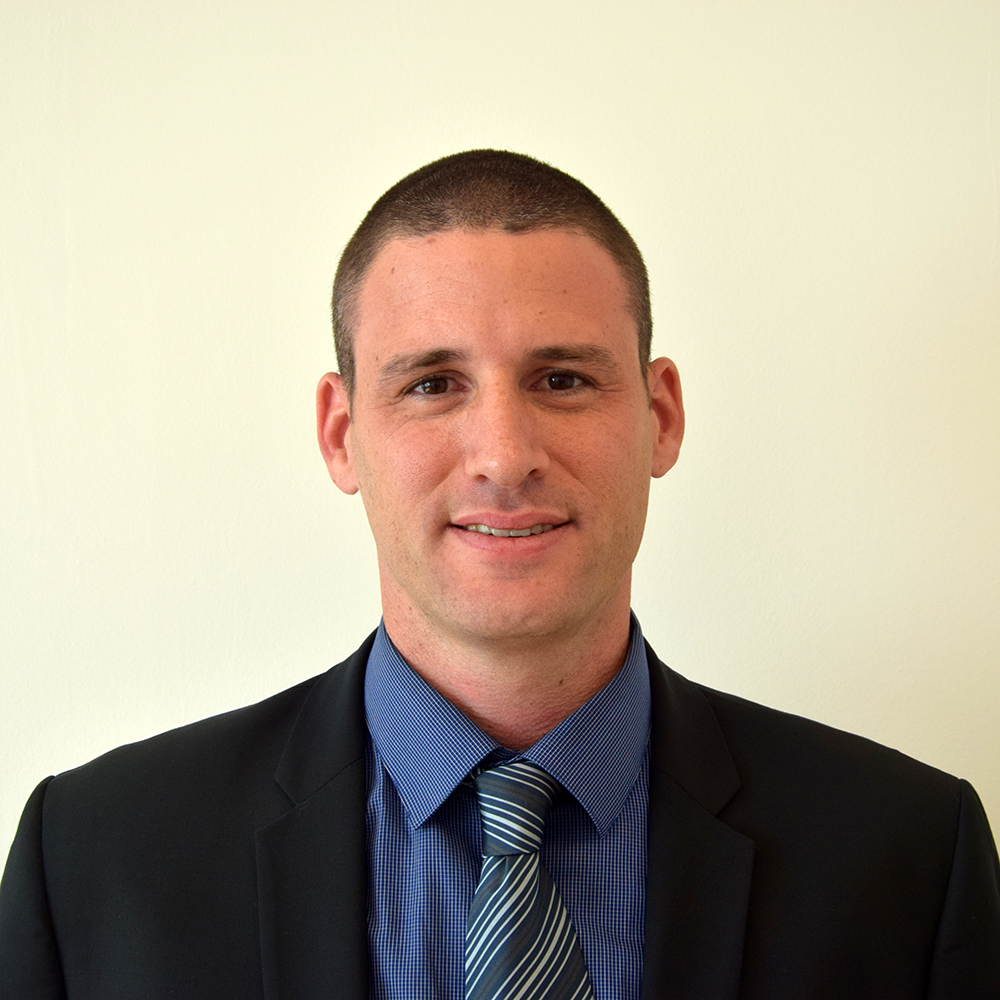
Nir Israeli
Sanoculis Ltd., Kiryat Ono, Israel
Nir Israeli
Sanoculis Ltd., Kiryat Ono, IsraelECS14
MIMS: STENT-LESS, SIMPLE AND FAST GLAUCOMA SURGERYNir Israeli1,*
1Sanoculis Ltd., Kiryat Ono, Israel
Sanoculis is an Israel-based company which develops and markets the MIMS® (Minimally Invasive Micro Sclerostomy) device and surgery for the treatment of the Glaucoma. MIMS® is simple, fast, and minimally invasive requiring no stitches, eye-patch, implant or stent. It is designed to reduce the caring costs of Glaucomatous patients through simplicity, low cost, fewer post-surgical complications and less hospitalization. The CE[1]approved MIMS® surgery was launched for commercial use in Europe and Israel. Over 450 patients have undergone the MIMS® surgery with patients going through up to 3-year milestone having excellent results. Recently, Bausch + Lomb has made an equity investment in Sanoculis and has entered into an exclusive European Distribution Agreement for MIMS®. Sanoculis is currently working on two new indications (for mild and severe Glaucoma) for MIMS® which will expand its potential market to all Glaucoma patients requiring surgery. In Q4 2023, Sanoculis intends to initiate a US FDA study to obtain US regulatory approval. The MIMS® technology creates a drainage channel to reduce IOP, ensuring a long lasting safe and controlled fluid flow. During the surgery, a sclero-corneal drainage channel is created to reduce the intra-ocular pressure (IOP). The novelty of the solution is that the channel ensures long-lasting controlled fluid flow with minor complications. MIMS® consists of a disposable sterile tool and a multi-use external machine. Its benefits are: a stent-less procedure, low risk of complications, it is suitable for most Glaucoma patients, has the potential for medication reduction, can be easily combined with Cataract surgery and surgeon-friendly, automatic with short learning curve. MIMS® is designed to reduce caring costs through procedure simplicity, low cost, fewer post-surgical complications and less hospitalization.
Company website: https://sanoculis.com/
-
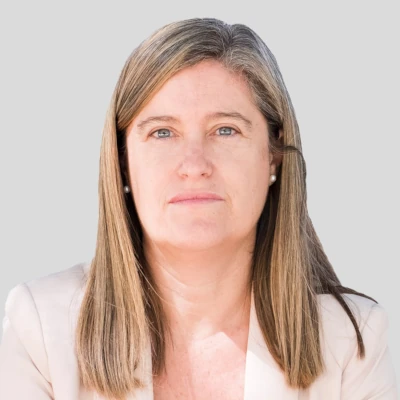
S. Marcos
2EyesVision, Madrid, Spain / University of Rochester, Rochester, United States
S. Marcos
2EyesVision, Madrid, Spain / University of Rochester, Rochester, United StatesECS01
MULTIFOCAL IOLS SEE-THROUGH SIMULATOR – ENHANCING THE PATIENT EXPERIENCE WITH A TAILORED IOL SELECTIONS. Marcos1,2,*
12EyesVision, Madrid, Spain, 2University of Rochester, Rochester, United States
Presbyopia affects 100% of the population above 45 years old and cataracts 45% of the population above 75. The surgical correction for these conditions – affecting 1.8 billion people worldwide- consists in replacing the crystalline lens with an IOL. There are more than 100 different lens combinations to correct presbyopia. Even with the same lenses, different patients have a completely different visual experience and perception. Not all patients accept all multifocal lenses, and currently this fact cannot be anticipated. So far, IOLs cannot be tried before surgery, generating unsatisfied patients, lack of confidence, and a perception of risk, limiting the market penetration (only 8% Multifocal vs 92% monofocal). Nowadays, the choice of optimal lens type is based on interviews with patients, estimation and intuition. There is no technology providing reliable predictions.
2EyesVision offers a revolutionary simultaneous vision simulator, SimVis Gekko, an ophthalmic instrument that allows patients to experience multifocality before surgery. It is not virtual reality, but optical manipulation. In <10 minutes, patients can try different existing Multifocal corrections and express their preference. acting as a fitting room for patients candidate to presbyopic corrections. The technology provides value to patients, clinics and lens manufacturers, as it has the potential to reduce uncertainty in postoperative results, improve patient’s satisfaction, and increase profitability. By bringing a reliable device that allows clinicians to assess how the patient would see with multifocal lenses, we not only solve the current problems, but also fill the void of an unexploited market.
Despite the clear market niche, SimVis Gekko is currently the only device in the market that is wearable, binocular, programmable; allowing patients to see through the device, and experience the real world through particular commercial IOLs instead of looking to a display, giving a more natural and realistic simulation. There are other simulators, but they are bulky, tabletop, VR or not see-through, monocular and not programable, thus less adapted to the clinical environment.
The competitive advantage of the product comes from its technological approach, protected by 5 patents and with more than 20 scientific publications describing the technology based on temporal multiplexing with tunable lenses, and clinical validations. Simulations of the most used and relevant multifocal intraocular lenses and contact lenses as well as lasik presbyopic patterns are already included in the device, which has led to some key sales to early adopters. Many other units are in validation projects. USA and Europe are the main opportunities as the device is CE-marked and has FDA Approval.
Company website: https://www.2eyesvision.com/
-
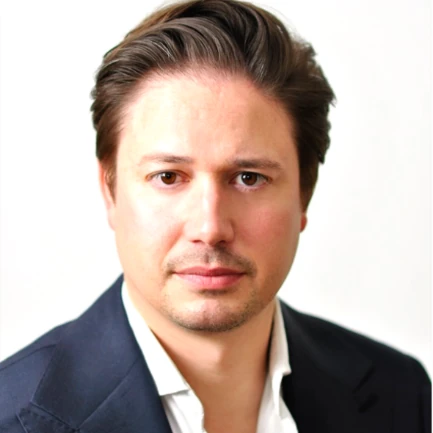
O. La Schiazza
DEZIMAL GmbH, Vienna, Austria
O. La Schiazza
DEZIMAL GmbH, Vienna, AustriaECS02
HOW DO I SEE AFTER A REFRACTIVE LENS EXCHANGE? – EXPERIENCE YOUR FUTURE IOL VISION PRIOR TO IMPLANTATIONO. La Schiazza1,*
1DEZIMAL GmbH, Vienna, Austria
DEZIMAL GmbH is an innovative start-up with cutting edge solutions in presbyopia treatment.
DEZIMAL emerged from a cooperation between ACMIT Gmbh, an Austrian research and development center specialized in medical technology and biomedical optics, and 1stQ Deutschland GmbH, an intraocular lens manufacturer with 30 years of experience in the IOL business under the guiding vision of 100% predictability in refractive lens exchange.Our product RALV (Real Artificial Lens Vision) is a novel, optical system for precise predictability of achievable vision after refractive lens exchange.
It allows accommodation-impaired patients to see preoperatively through real intraocular lenses (IOLs) to experience postoperative vision with an IOL prior to implantation. The technology is unique as it offers the view through the IOL with a large field of view through an optical lens system. The optical system “neutralizes” the natural lens of the patient and thereby accounts for the spherical and chromatic aberrations of the pseudophakic eye. The result is an immersive and optically correct experience of the pseudophakic vision. A set of qualitative and quantitative vision tests (including a novel quantitative halo/glare test) have been realized to support the selection of an IOL (i.e. monofocal, EDOF, mulifocal) in terms of subjective assessment to achieve maximum patient satisfaction after lens exchange.Motivation:
- Trend towards freedom from glasses in old age
- Freedom from glasses can be achieved through multifocal intraocular lenses (MIOL)
- Individual tolerance of multifocal IOLs with no predictability
- Currently insufficient patient education by means of computer simulations and photomontage that does not reflect subjective visual impression
Benefits of RALV for physicians, patients, and lens manufacturers:
- increased access to MIOL technology
- selection of the individually best IOL by experiencing the postoperative visual impression
- realistic patient expectation
- patient satisfaction
- self-determined decision of the patient
- fewer complaints (i.e. fewer explantations)
- simple and understandable preoperative patient education
- improved communication between physician and patient
- safety for physician and patient by monitoring the quality of the implantation through pre- and postoperative eye tests (visual aquity, contrast sensitivity, halo/glare test)
- reproducible results through standardized process
- easy and fast testing for the development of new lens designs
- possibility for IOL studies without actual implantation
Company website: https://dezimal.me/en/
-
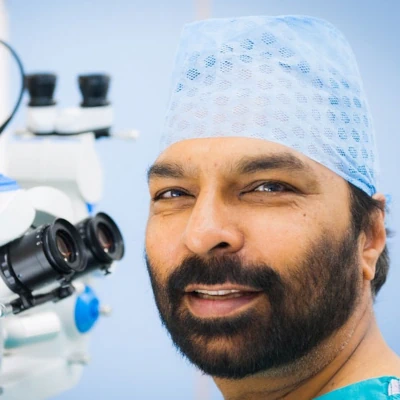
M. Pande
CustomLens AI, North Ferriby, United Kingdom
M. Pande
CustomLens AI, North Ferriby, United KingdomECS03
CUSTOMLENS AI: PREMIUM VISION OUTCOMES MADE EASY AN EXPERT SYSTEM FOR POWERING THE ADOPTION OF REFRACTIVE CATARACT SURGERYM. Pande1,*
1CustomLens AI, North Ferriby, United Kingdom
Unmet Need: Our mission is to address the glaring unmet need in Advanced Refractive Cataract/Lens Surgery, where a mere 15% of the 25 million global cataract surgery procedures embrace these transformative techniques. Our unwavering goal is to propel this to 50% or higher within the next five years, revolutionizing patient outcomes worldwide.
Value Proposition: We aim to shatter the barriers that impede patients and surgeons from accessing the full potential of these technologies. By mitigating the cost and complexity associated with technology implementation in surgical planning, we empower surgeons and enhance patient care. Our solution automates the generation of meticulous surgical plans, granting surgeons an effortless, efficient, and scalable tool. This breaks down entry barriers for new surgeons and amplifies the efficiency of experienced surgeons. The value we create spans the ecosystem, from the increased sales of premium IOLs, amplified practice revenues and improved quality of life for millions of patients no longer reliant on post-surgery spectacles.
Our Solution: We are pioneering an AI-assisted software platform that serves as an expert system for surgeons. This groundbreaking platform produces two pivotal outputs:
1.The Surgical Prescription: A comprehensive plan that equips surgeons with all the details to execute procedures flawlessly. Through seamless automation, our platform calculates the precise optical correction required for maximising spectacle-free vision. Surgeons can tailor the level of automation, empowering their flexibility and precision.
2.The Functional Vision Prediction: Our software’s distinguishing feature lies in its ability to forecast post-operative functional vision. This tool empowers clinical teams to convey precise expectations to patients. It allows for a shared understanding of a patient’s functional vision journey. This framework facilitates result audits, leveraging both natural and artificial intelligence to refine surgical strategies and algorithms.
Our predictive engine encompasses a three-dimensional analysis: Visual Acuity predictions for Distance, Intermediate, and Near vision under various lighting conditions, Objective Task Performance predictions for intermediate and near vision tasks, and Patient’s Subjective Perception of spectacle-free vision. This unique fusion of traditional and AI-based models delivers clinically relevant confidence levels.
Goals: We are aiming to commercialise this application, generate further algorithms to enhance outcome quality and predictability, extend its application to other ophthalmology and surgical domains. Our ultimate objective is to establish a transformative presence across all surgical specialities.
Company website: https://visionsurgery.co.uk/
-
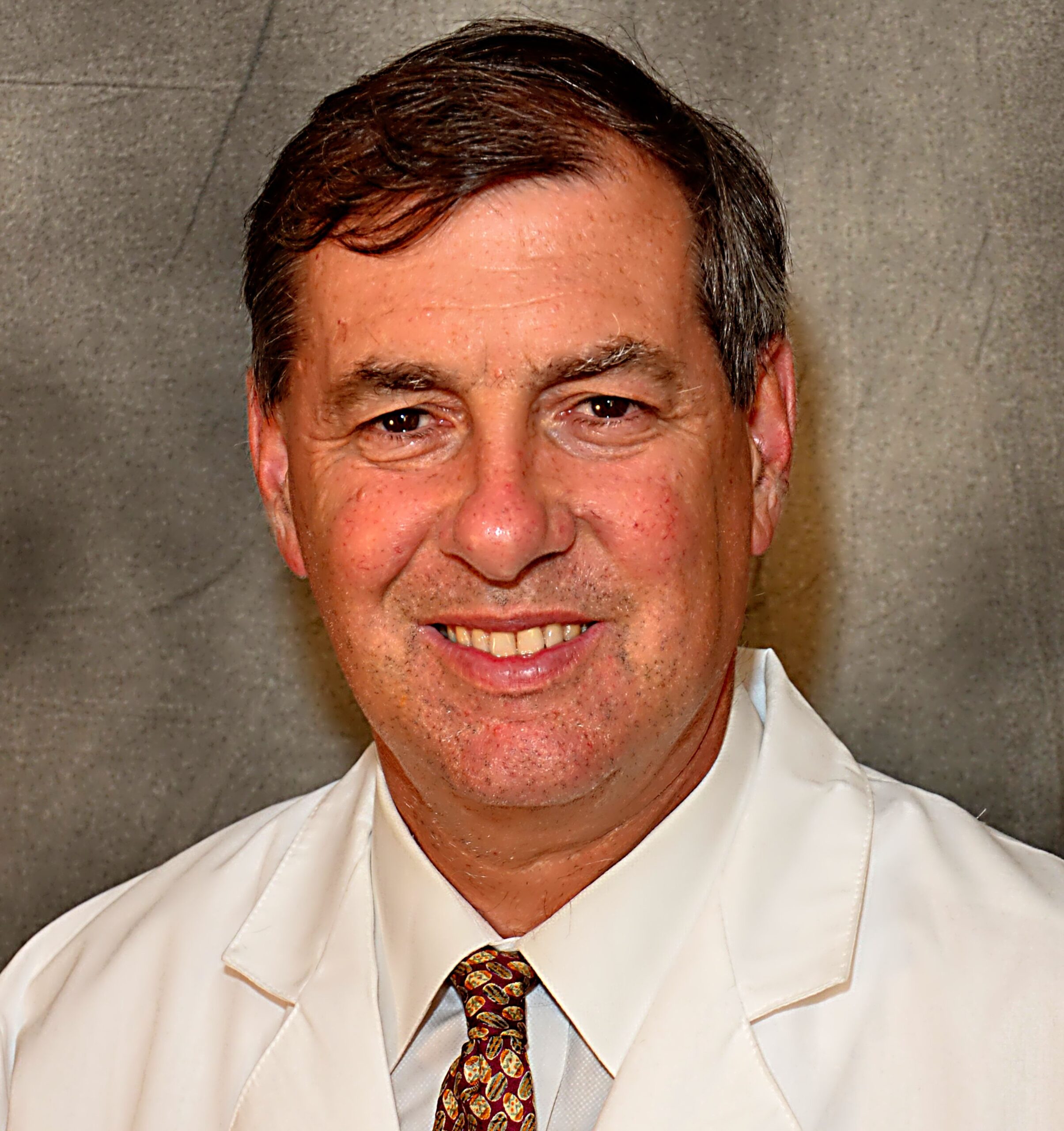
Eric Donnenfeld
LensGen , Irvine, United States
Eric Donnenfeld
LensGen , Irvine, United StatesECS04
LENSGEN – A SUPERIOR IOL SOLUTION FOR TREATING PRESBYOPIAEric Donnenfeld1,*
1LensGen , Irvine, United States
LensGen, a clinical stage opthalmic device company based in Irvine, California has developed a distruptive shape changing fluid intraocular lens (IOL) for treating cataracts and presbyopia. With its innovative Juvene IOL the company aims to bring to market this revolutionary device designed to restore full range of vision with high quality optics and improved safety ue to its biomimetic, capsule filling design. The Juvene IOL is cleared by FDA for pivotal US clinical study, supported by six-years OUS clinical experience with positive safety and efficacy outcomes. The LensGen Juvene IOL is also cleared by the Federal Institute for Drugs and Medical Devices (BfArM) to start a multicenter clinical study in Germany. On May 6, 20023, Sumit Garg, MD, from the Gavin Herbert Eye Instutute, University of California, Irvine presented 36 months clinical data at the American Society of Cataract and Refractive Surgery in San Diego.
Company website: https://lensgen.com/
-

C. Adams
Glint Pharmaceuticals, Cambridge, United States
C. Adams
Glint Pharmaceuticals, Cambridge, United StatesECS05
DRUG DELIVERY CONTACT LENS TECHNOLOGY TO TREAT EYE DISEASEC. Adams1,*
1Glint Pharmaceuticals, Cambridge, United States
Glint has developed a novel, patented approach for extended drug delivery by the incorporation of vitamin E (α tocopherol) in commercial silicon hydrogel contact lenses. The use of commercial contact lenses that are already approved by the FDA, reduces barriers to translation. The drug eluding Glint contact lens maintain transparency, wettability, UV-blocking capability, as well as oxygen and ion permeability. The Glint approach has a competitive advantage over other ocular drug delivery technologies. The technology uses commercial lenses, is easily scalable and can deliver multiple drugs separately or in combination.
The Glint lens provides a new, non-surgical method to treat eye disease, increasing patient compliance while delivering appropriate drug to the eye. Improving drug delivery efficiency to the ocular tissue may help reduce the incidence of serious ocular complications and blindness. Sustained release will eliminate the need for multiple drops each day.
Corneal injury from trauma, infection, or surgery affects over 8,000,000 people per year in the US and Europe. Blindness occurs in a significant number of cases. The single or multi drug eluting contact lens will not only offer convenience and cost savings for eye care providers but will eliminate the drop burden for patients and their care givers while enhancing compliance.
Company website: https://freyaophthalmics.com/
*Please note the company website has been changed since submission.
-

S. M. Buckley
University College Dublin, Royal College of Surgeons, Dublin, Ireland
S. M. Buckley
University College Dublin, Royal College of Surgeons, Dublin, IrelandECS06
NON-INVASIVE, WEARABLE DEVICE FOR CONTROLLED TEAR SECRETIONS. M. Buckley1,2,*
1University College Dublin, 2Royal College of Surgeons, Dublin, Ireland
Lia is an Ophthalmic medical device company developing new therapeutic solutions for the treatment of Ocular Surface Disease.
Our patent pending technology employs already proven neurostimulation and neuromodulation pathways to control and deliver natural tear secretion but uses a completely novel way to access these pathways. The technology will be placed along the eyebrow line and can be worn in comfortable, non-invasive forms, for example headbands which do not interfere with vision, VR headsets, etc.
Our technology leverages the cold thermoreceptors present in the upper eyelid and cornea to stimulate the natural tear. Research has shown that these cold thermoreceptors control “Basal” and “Reflex” tearing and have the potential to also control the secretion of the “Closed Eye” tear overnight, currently a tremendously debilitating time for patients experiencing ocular surface symptoms.
Clinicians will now have a convenient at-home tool to prescribe and treat their patients in a new, safe and effective way.
Our highly experienced product development and commercialisation team is joined by Mr. Arthur Cummings as our Clinical Advisor.
We are seeking investment partners to progress our clinical studies and obtain market approval in the US and EU, through defined pathways with clear milestones.
Company website: https://www.nightleaffordryeye.com/
-
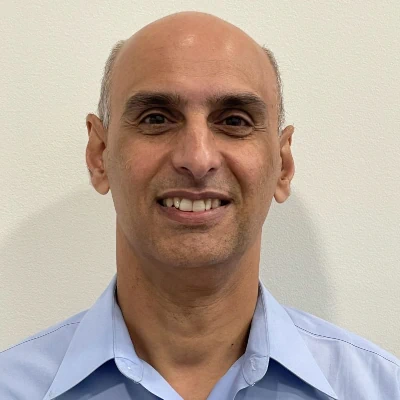
A. Singh
W. L. Gore & Associates, Elkton, United States
A. Singh
W. L. Gore & Associates, Elkton, United StatesECS07
DEVELOPMENT OF A NOVEL GORE SYNTHETIC CORNEA DEVICEA. Singh1,*
1W. L. Gore & Associates, Elkton, United States
W.L. Gore & Associates is a material science company and a leading developer of successful medical devices with applications in cardiovascular and general surgery. Through our unique material technologies, we provide differentiated solutions to clinically critical unmet needs. Tasked with identifying new growth areas, we are investigating the value of our materials and medical device capabilities in Ophthalmology. Today, we are actively partnering with ophthalmologists to understand their unmet needs and to solve these problems with our materials technology, understanding of tissue-materials interfaces, device design and product development know-how.
Over the past eight years, we have engaged with hundreds of ophthalmologists to better understand the challenges they face. A significant challenge we have identified is in the treatment of corneal blindness. Diseases affecting the cornea are the third leading cause of blindness worldwide, following cataract and glaucoma, affecting about 7-9 million people globally. Currently, there are no medical treatments available to restore clarity in diseased corneas. Donor transplantation remains the mainstay of management. In countries where there is an inadequate supply of donor tissue or in patients who are unable to maintain corneal clarity, the only option to restore vision is through the use of a synthetic cornea.
To address this challenge, we have applied our materials expertise to develop a synthetic cornea device prototype that can potentially restore vision without the limitations of the current treatment options. The results of a recently concluded pre-clinical study attest to the favorable outcomes observed with our prototype device and materials of construction. Currently, we are preparing to initiate a first-in-human study in Q1 2024 to evaluate the initial safety and effectiveness of our device prototype in the treatment of corneal opacity in patients who are candidates for corneal surgery.Company website: https://www.gore.com/
-

M. Webb
Epion Therapeutics, Burlington, United States
M. Webb
Epion Therapeutics, Burlington, United StatesECS08
EPI SMART, TRUE EPI-ON CORNEAL CROSS-LINKING FOR KERATOCONUSM. Webb1,*
1CXL Ophthalmics, INC, Burlington, United States
CXL Ophthalmics (CXLO) is developing innovative treatments for corneal diseases with the goal of saving and improving vision for millions of patients around the world. EpiSmart™ is a transformative cross-linking system targeting keratoconus, a common type of corneal ectasia. As a true epi-on procedure, EpiSmart is designed to be minimally invasive without mechanical or chemical disruption of the epithelium, significantly reducing discomfort and recovery time versus current standards of care.
CXLO’s approach will elevate the standard of care for treating keratoconus by enabling treatment upon initial diagnosis, at the earliest stage of disease and the treatment of both eyes simultaneously.
In Q3 of 2022, CXLO raised a $32 million Series A funding round led by AXA IM Alts through its Global Health Private Equity strategy plus a syndicate of individual investors, including leading cornea specialists. With new ownership, new leadership, and a global health mandate, these new investments will support the advancement of EpiSmart, through Phase 3 trials, beginning in 2023, on the way to a New Drug Application with FDA.
Company website: https://www.epiontx.com/
*Please note the company website has been changed since submission.
-
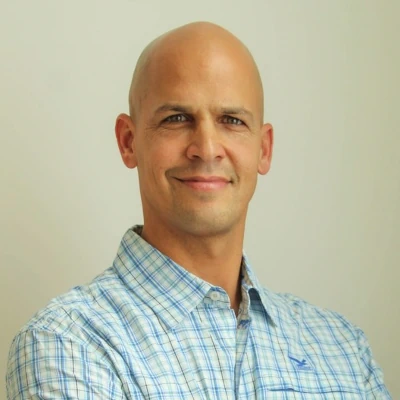
N. Shimoni
EyeMed Technologies Ltd., Or Yehuda, Israel
N. Shimoni
EyeMed Technologies Ltd., Or Yehuda, IsraelECS09
VALENS: INNOVATIVE POSTOPERATIVE ADJUSTABLE IOL. VALENS IS AN IOL CRADLE SYSTEM WITH A POSTOPERATIVE, REPEATABLE, ADJUSTABLE LENS POSITION, WHICH ENABLES NON-INVASIVE REFRACTIVE OPTIMIZATION AFTER LENS IMPLANTATION AND WOUND HEALING.N. Shimoni1,*
1EyeMed Technologies Ltd., Or Yehuda, Israel
Technology: VaLens is an intra-ocular lens cradle system which enables the physician to precisely adjust the power of the lens in a non-invasive postoperative, office-based, simple treatment that can be repeated multiple times.
First intended use: EyeMed’s vision is to guarantee emmetropia and ‘glasses off’ for every lens implanted patient. In about 30% of patients, the patient is left with a residual refractive error causing a deficiency in his/her eyesight due to misalignment of the focal point of the lens. EyeMed’s innovative solution is intended to be implanted in cataract surgeries involving a premium lens and to enable a simple solution to all patients that need a postoperative adjustment after implantation.
Clinical and Economical value: Cataract surgery is the most frequent surgical procedure in medicine today, with about 30M surgeries performed annually. The premium IOL segment sales projection, in 2024, is a $3.1B annual revenues. Growth of premium lens market is mostly impeded because surgeons do not feel confident enough to be able to guarantee perfect vision post surgery. Additionally, surgeons prefer not to deal with the likelihood of post surgery touchups. EyeMed expects to provide a significant competitive advantage to premium lens manufacturers as well as to physicians using its technology.
Competitive advantages: (1) A non-invasive adjustment treatment that reduces risk in comparison to other solutions that require additional surgical interventional procedures; (2) VaLens is adaptive to all lenses’ types – Toric, Monofocal, Multifocal and combinations of them like no other competitor, thus covering all premium IOLs market segments; (3) Enables a repeatable treatment; (4) Does not requir unique expensive capital equipment, like other competitors. All system components are off the shelf, highly affordable and accessible; (5) Simple one time treatment for adjustment that can be performed in every clinic. A smooth patient experience relative to other solutions.
-
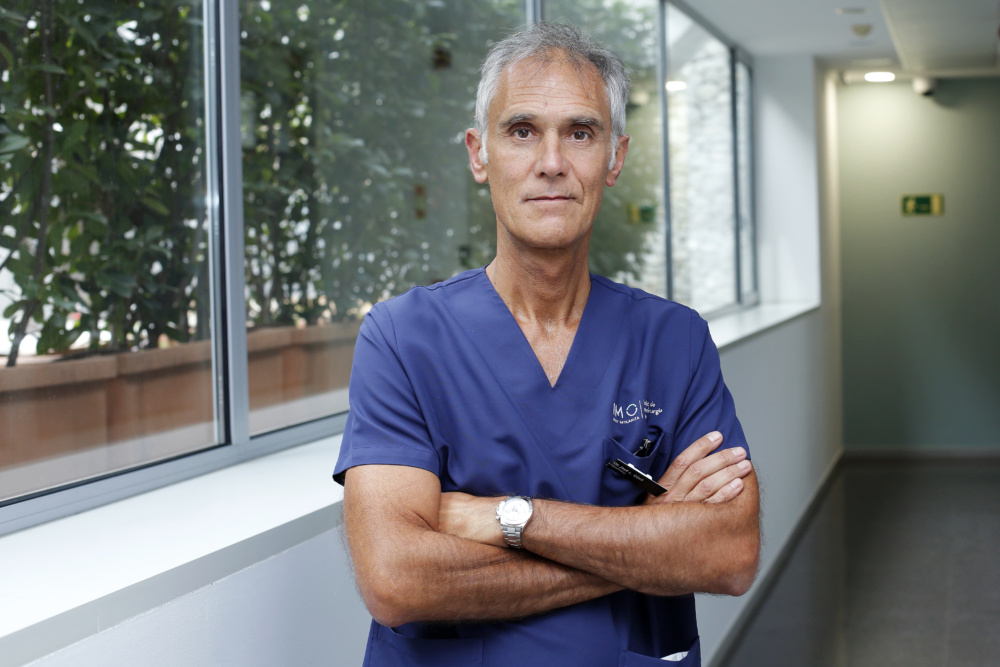
J. Guëll
IMO Instituto de Microcirugía Ocular, Barcelona, Spain
J. Guëll
IMO Instituto de Microcirugía Ocular, Barcelona, SpainECS10
CORRECTING PRESBYOPIA IN YOUNG PATIENTS WITH THE PHAKIC ARTIPLUS LENSJ. Guëll1,*
1IMO Instituto de Microcirugía Ocular, Barcelona, Spain
Ophtec is a family owned business that develops ingenious lenses, different from the usual market concepts.
The Artiplus phakic IOL is such an ingenuous lens. It is an iris fixated lens that makes use of the unique patented CTF (Continuous Transitional Focus) technology that allows correction of presbyopia in young patients that still have a healthy crystalline lens.This unique solution corrects myopic presbyopes, hyperopic presbyopes and ametropic presbyopes allowing patients to keep their natural crystalline lens. For young eyes, where there is still some degree of accommodation, this represents an extra benefit resulting in an outstanding quality of vision as the first clinical results show while providing high levels of spectacle independence. The Artiplus solution is also reversible offering the possibility to explant the lens easily.
Company website: https://www.ophtec.com/
-

A. Khan
Radius, Pleasanton, United States
A. Khan
Radius, Pleasanton, United StatesECS12
RADIUS – A MODERN, PATIENT-FIRST WEARABLE DEVICE DELIVERING A SUITE OF PRACTICE MANAGEMENT TOOLS & PRECISION DIAGNOSTICSA. Khan1,*
1Radius, Pleasanton, United States
The Radius system builds on the therapeutic legacy of IrisVision, a 2019 CES Innovation Winner, by introducing multimodal diagnostic capability to a proprietary wearable XR headset. Onboard, patient-guided engagement algorithms enable patients to quickly and easily conduct up to several frequently performed vision tests with minimal guidance or intervention by the staff. With a single headset and tablet, Radius replaces multiple expensive testing devices at a fraction of the cost of just one legacy device. The headset’s environment controls enable use in any lighting conditions, eliminating the need for the dark testing space required by traditional legacy devices and eliminating the need for patients to shuttle between machines.
Radius is the industry’s lightest wearable device (6 oz./172g) and features all-day battery life. Unlike legacy devices that force patients to sit in an uncomfortable position, the Radius headset allows patients to sit comfortably throughout the test, which can be performed anywhere. Headset levers can be adjusted to accommodate a patient’s prescription for corrected vision. Radius XR operates anywhere there is Wi-Fi and works online and offline, ensuring uninterrupted testing. Diagnostic and patient management aspects are integrated into the Radius XR system. The Admin dashboard streamlines check-in and enables staff to customize the experience for multiple patients. With just a click, staff can order the sequence of tests and a suite of educational media from eyecare practitioners. Status notifications keep staff apprised of a patient’s progress. The Exam app provides clinicians with results in real-time. The software integrates with existing practice management and EHR systems.
Radius XR includes a Business Suite that helps clinicians manage business aspects critical to their practice’s ongoing success:
Radius XR can double patient capacity with enhanced workflows that enables a single technician to use multiple headsets to administer test sessions across several patients simultaneously.
Radius provides an educational video library tailored to each patient’s specific care needs and interests to help set expectations, increase peace of mind, and broaden patients’ knowledge of the practice’s range of services. When an office admin checks in a patient and orders the device for the tests, they simply check the appropriate videos. The system automatically plays this content after the exam while the patient still wears the headset, eliminating the repetitive, time-consuming task of providing patients with educational information while ensuring the appropriate information is consistently presented.
Clinicians can also use a drag-and-drop interface in the Admin app to create and record their own customized media, allowing them to include targeted, practice-specific content easily. This content can be added in the same way as educational content, as part of an immersive post-exam experience.
Company website: https://radiusxr.com/
-

S. O’neil
ViaLase, Aliso Viejo, United States
S. O’neil
ViaLase, Aliso Viejo, United StatesECS13
VIALASE DESIGNING AN IMAGE GUIDED FEMTOSECOND LASER FOR GLAUCOMA TREATMENTS. O’neil1,*
1ViaLase, Aliso Viejo, United States
ViaLase, Inc. is a globally-minded, venture capital-backed, clinical stage medical technology company located in Aliso Viejo, CA. ViaLase is focused on disrupting the conventional glaucoma treatment paradigm with the introduction of a truly noninvasive image-guided femtosecond laser treatment that enhances glaucoma patient care. With a leadership team that has vast experience developing, designing, manufacturing, and commercializing the first femtosecond lasers for ophthalmic surgery for refractive and cataract patients, ViaLase is now bringing that expertise and innovation to glaucoma patients. ViaLase believes in collaborating closely with health care providers, payers, societies, and patients to inform our product development and commercial activities with the goal of bringing this revolutionary treatment to glaucoma patients across the globe.
Company website: https://www.vialase.com/
-

D. Stephenson
Stephenson Eye Associates, Venice / Atia Vision, Campbell, United States
D. Stephenson
Stephenson Eye Associates, Venice / Atia Vision, Campbell, United StatesECS04B
ATIA VISION AND THE OMNIVU MODULAR, SHAPE-CHANGING INTRAOCULAR LENSD. Stephenson 1,2,*
1Stephenson Eye Associates, Venice, 2Atia Vision, Campbell, United States
Atia Vision, Inc., a Shifamed portfolio company, is committed to improving the visual outcomes of patients undergoing cataract surgery through the development of an intraocular lens that restores the full range of functional vision, minimizing visual disturbances. Building from the learnings in the accommodative IOL, we have created a novel presbyopia-correcting lens design called the OmniVu lens.
The OmniVu lens system is comprised of a fixed power front optic and a fluid-filled, shape-changing base lens. The fixed power front optic is made from hydrophobic acrylic and contains three docking tabs located equidistant around the periphery of the 5.6 mm optic. The shape-changing fluid-filled based shell is made from silicone and is filled with biocompatible silicone oil. The base contains an inner channel in which to dock the fixed power front optic.
The novel lens aims to restore a full range of vision, deliver binocular continuous focus across more than 4.0 D of defocus without visual symptoms and provide contrast sensitivity comparable to monofocal IOLs.
While the first-in-human clinical trial is ongoing, early review of results show promise. At 6 months, the OmniVu lens treated eyes showed stable refractive outcome with near plano refraction with no induced clinically significant astigmatism. The mean logMAR (±SD) monocular uncorrected VA was 0.04 (±0.09) at distance (6/6), 0.07 (±0.11) at intermediate (6/7.5), and 0.23 (±0.14) at near (6/9.5, J2). The mean (±SD) binocular uncorrected VA was -0.06 (±0.03) at distance (6/4.8), -0.02 (±0.09) at intermediate (6/6), and 0.17 (±0.09) at near (6/9.5, J2). Additional patients and follow-up are underway. Updated results will be presented.
The company is actively working toward US FDA submission for an IDE clinical trial.
Company website: https://atiavision.com/
-
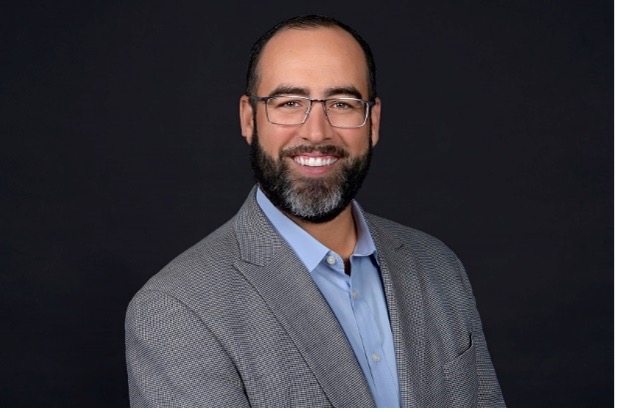
J. Fernandez
Olleyes, Summit, United States
J. Fernandez
Olleyes, Summit, United StatesECS11
OLLEYES VISUALL: A NOVEL VIRTUAL REALITY PLATFORM IN GLAUCOMA CAREJ. Fernandez1,*
1Olleyes, Summit, United States
Olleyes, is a medical device company developing mobile and home-based diagnostic products for eye disorders. At Olleyes, we make eye care more productive and personalized with VisuALL VRP— a portable visual care testing platform, which currently includes visual field, visual acuity testing, color testing, pupillometry, and extraocular motility. The VisuALL leverages virtual reality (VR), artificial intelligence (AI), and augmented technology to enable eye-care providers to remotely monitor common eye diseases.
Company website: https://olleyes.com/
2022
Meet the 2022 Emerging Company Showcase Speakers
-

Reinhart Poprawe
AIXLens -
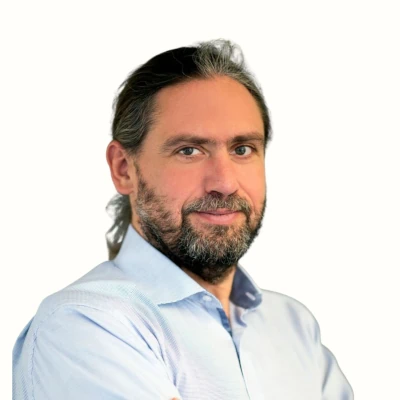
Michael Mrochen
Allotex -

Daria Lemann Blumenthal
BELKIN Vision -

Arthur B. Cummings
Bynocs -
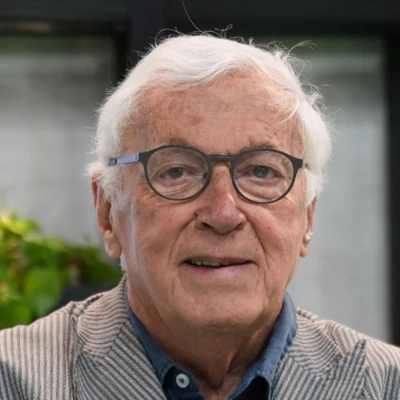
Philippe Sourdille
Ciliatech -
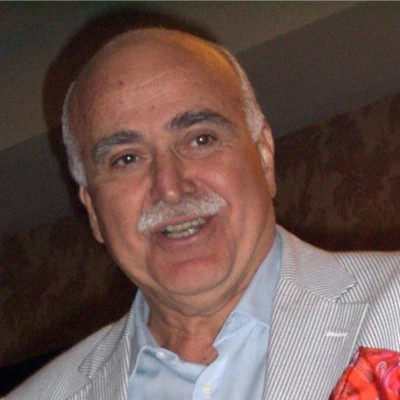
Ioannis Pallikaris
EyePCR -
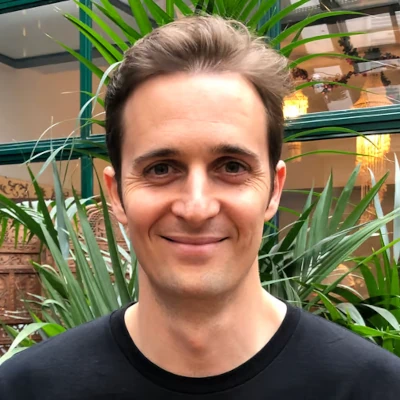
Florent Costantini
Glasspop -
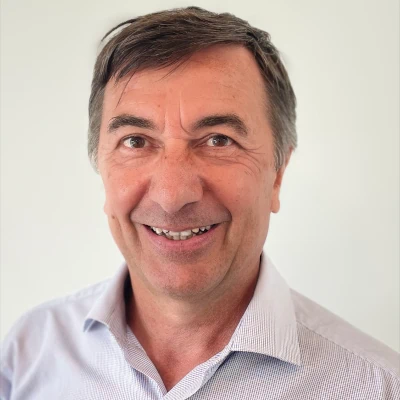
Francois Salin
Ilasis -
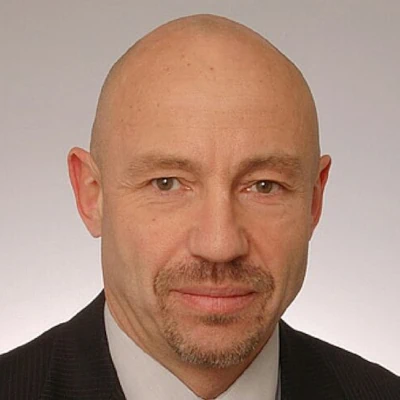
Max Ostermeier
Implandata -

Michael Brownell
KERANOVA -
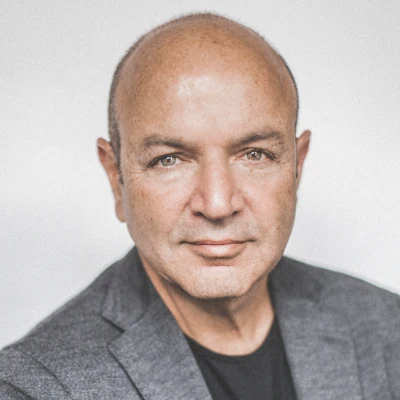
Omid Kermani
ROWIAK -
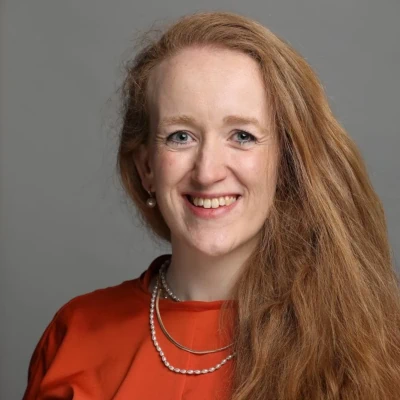
Aisling Higham
Ufonia
Why you should join us for the Emerging Company Showcase



Share new technologies with a large ophthalmic audience.
Gain greater visibility and recognition in the field.
Accelerate growth and market introduction.
